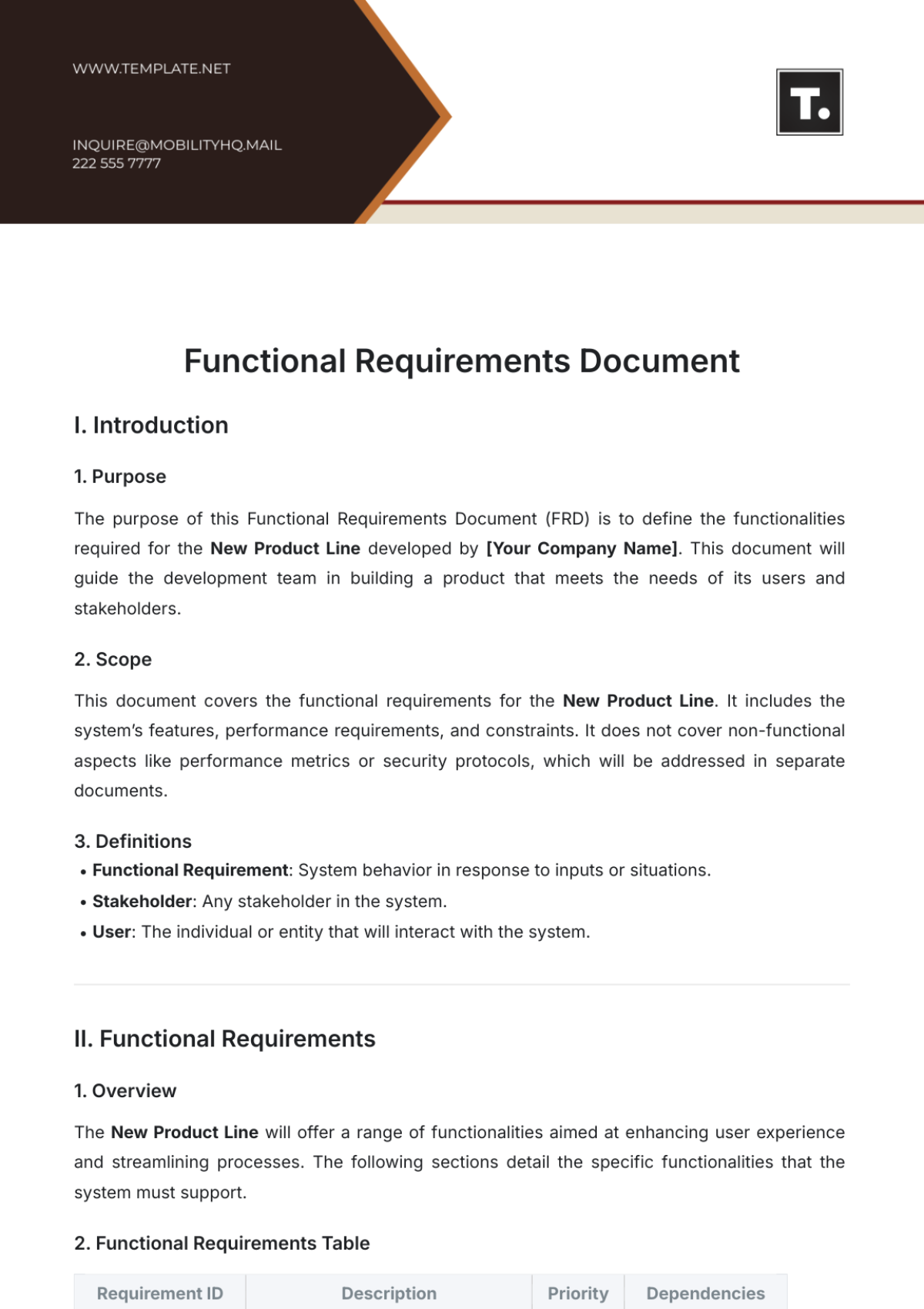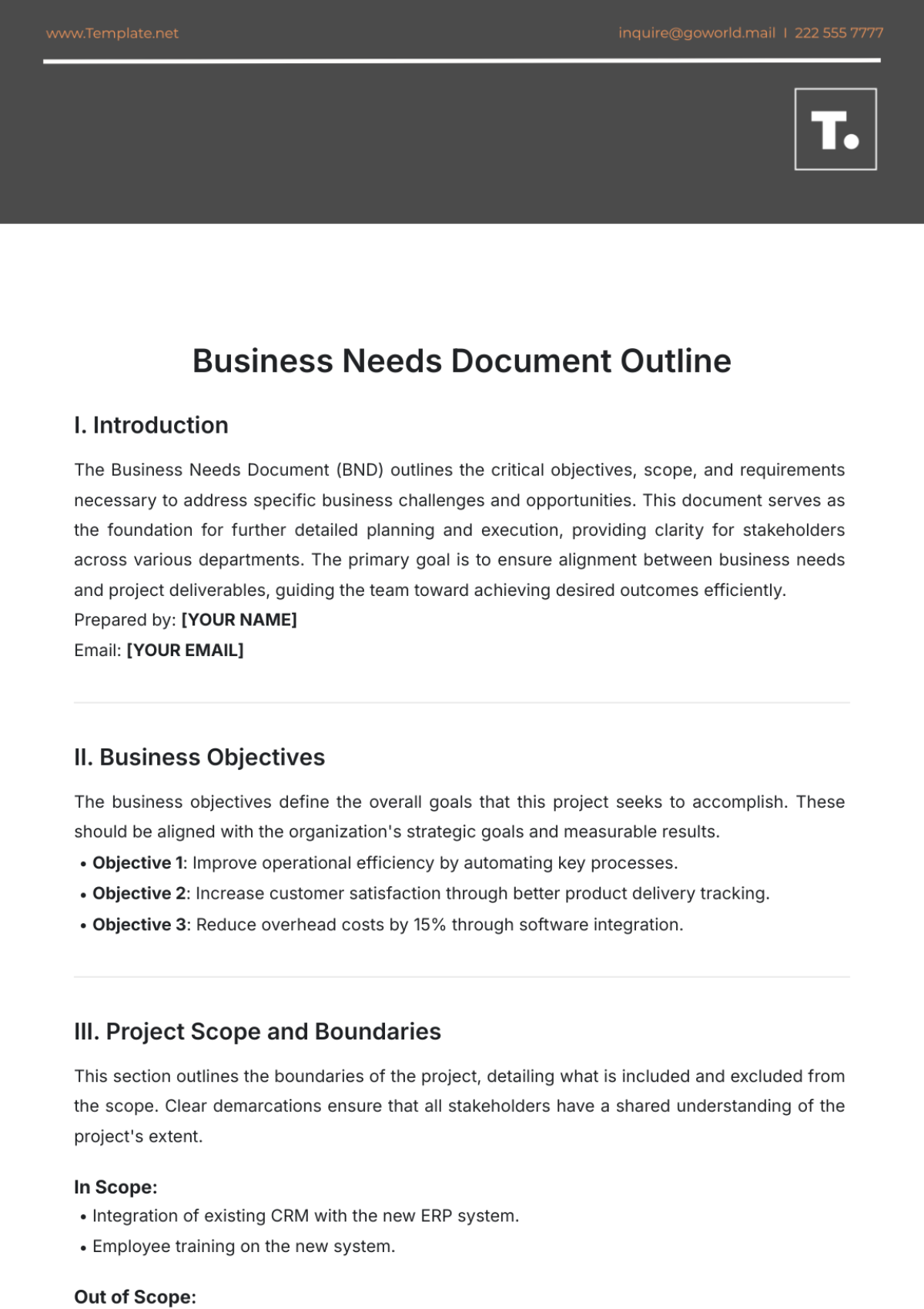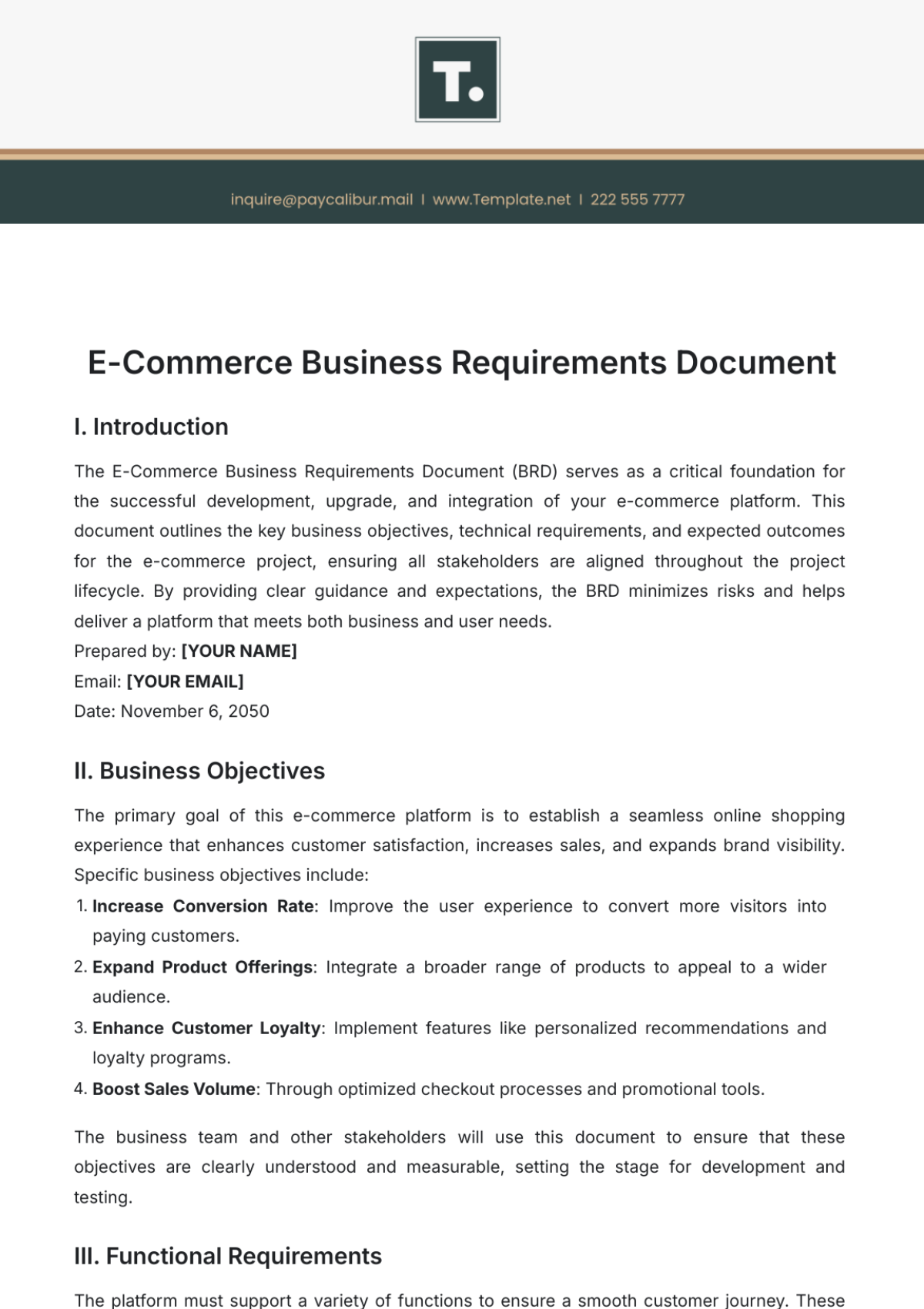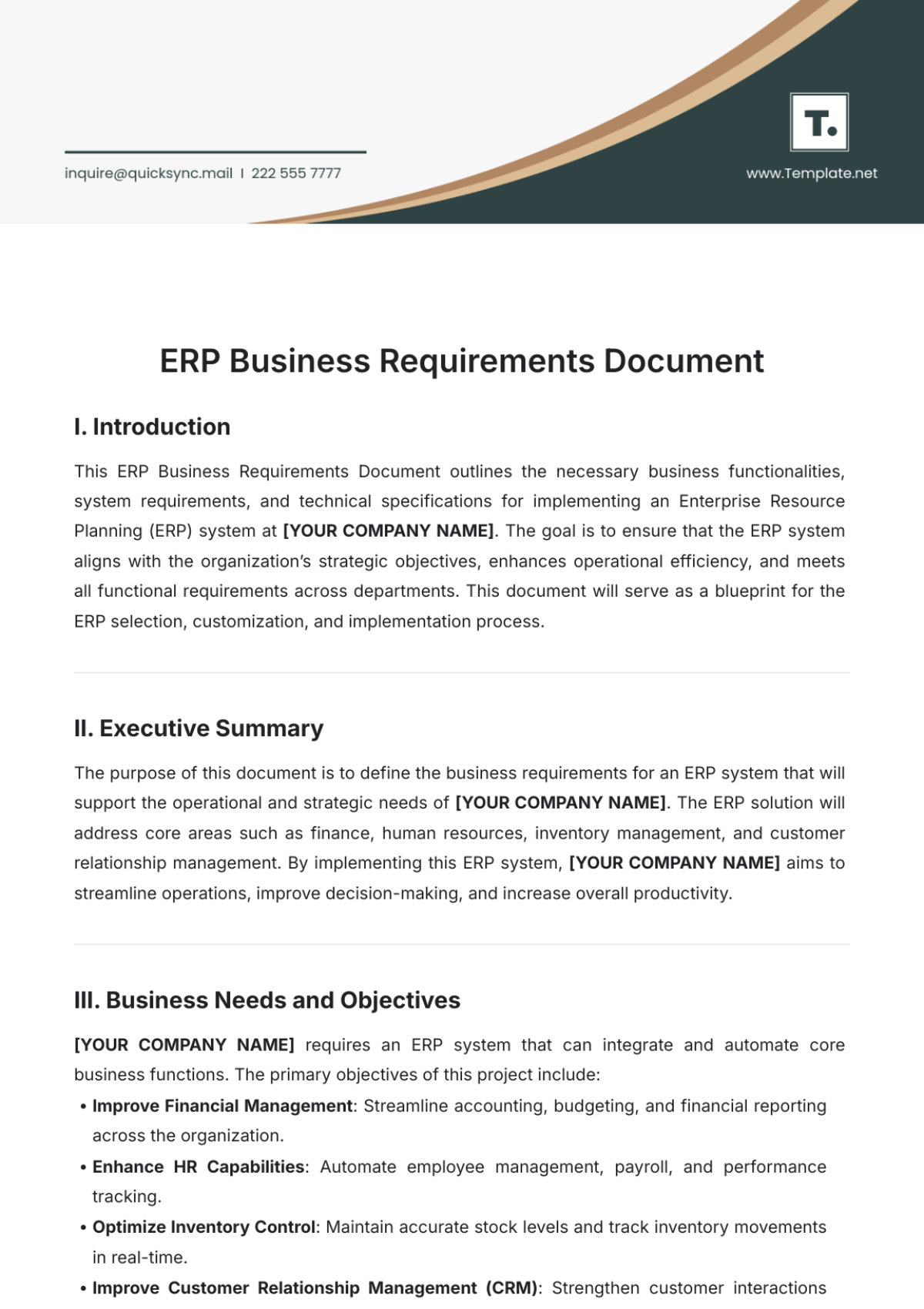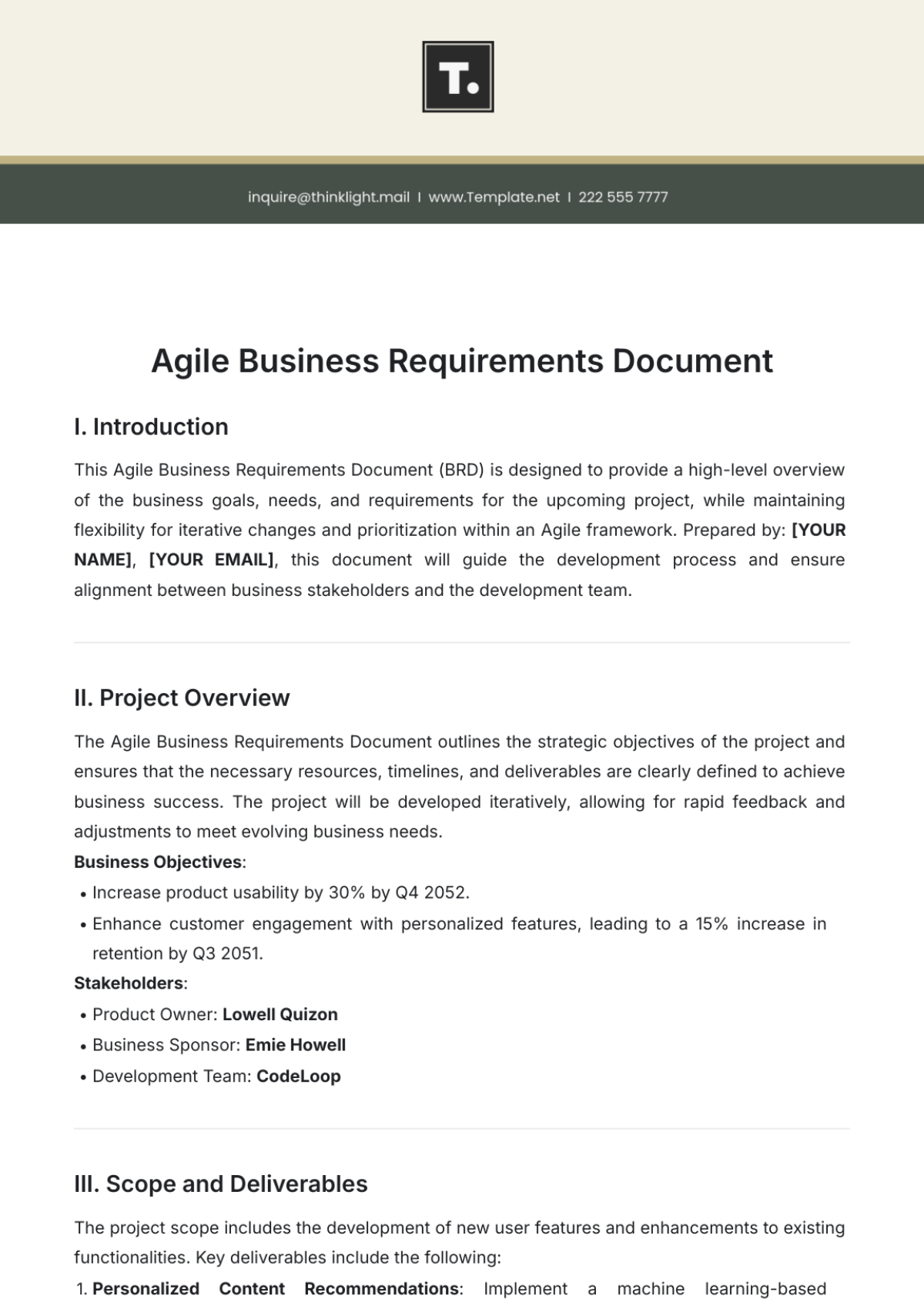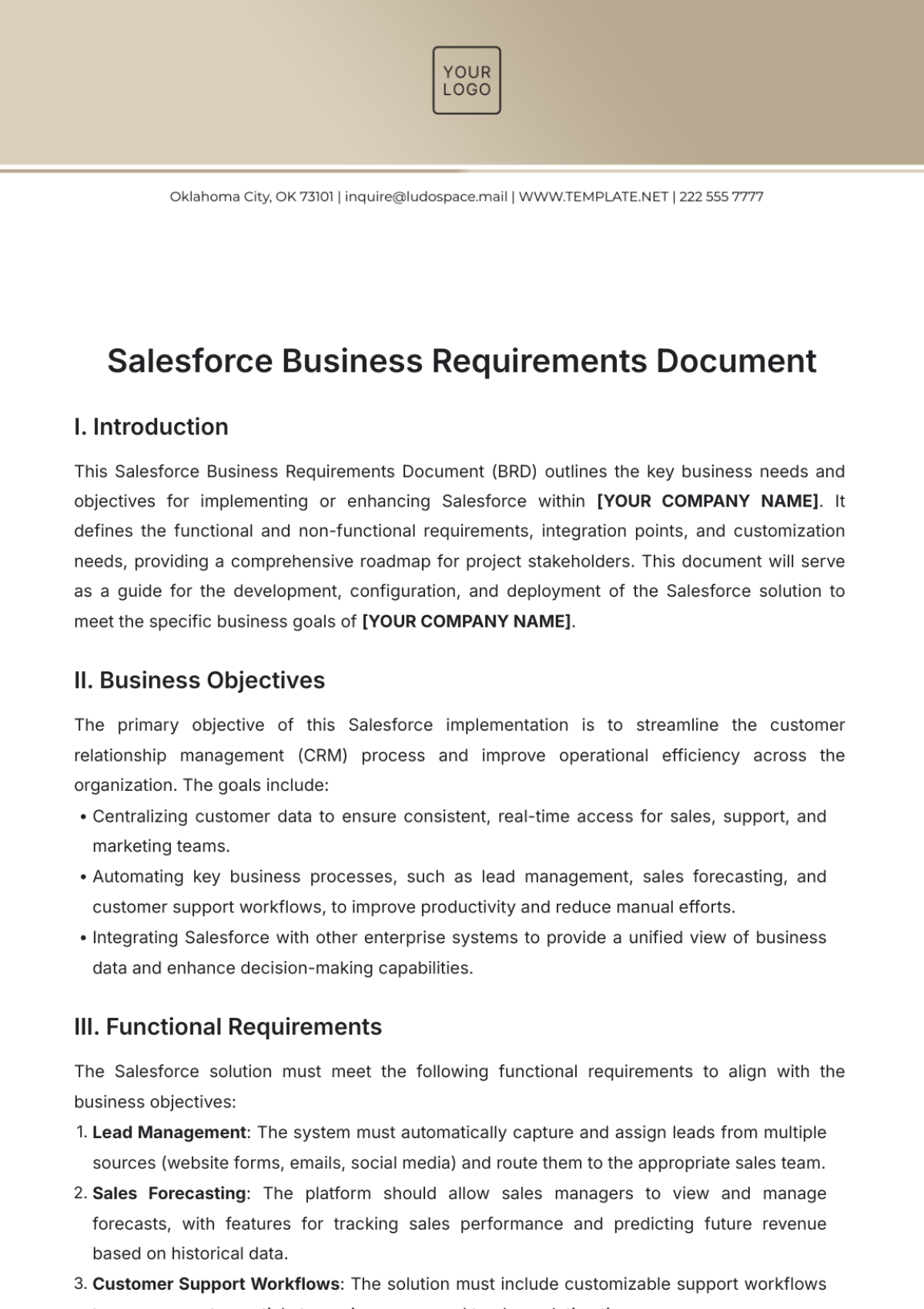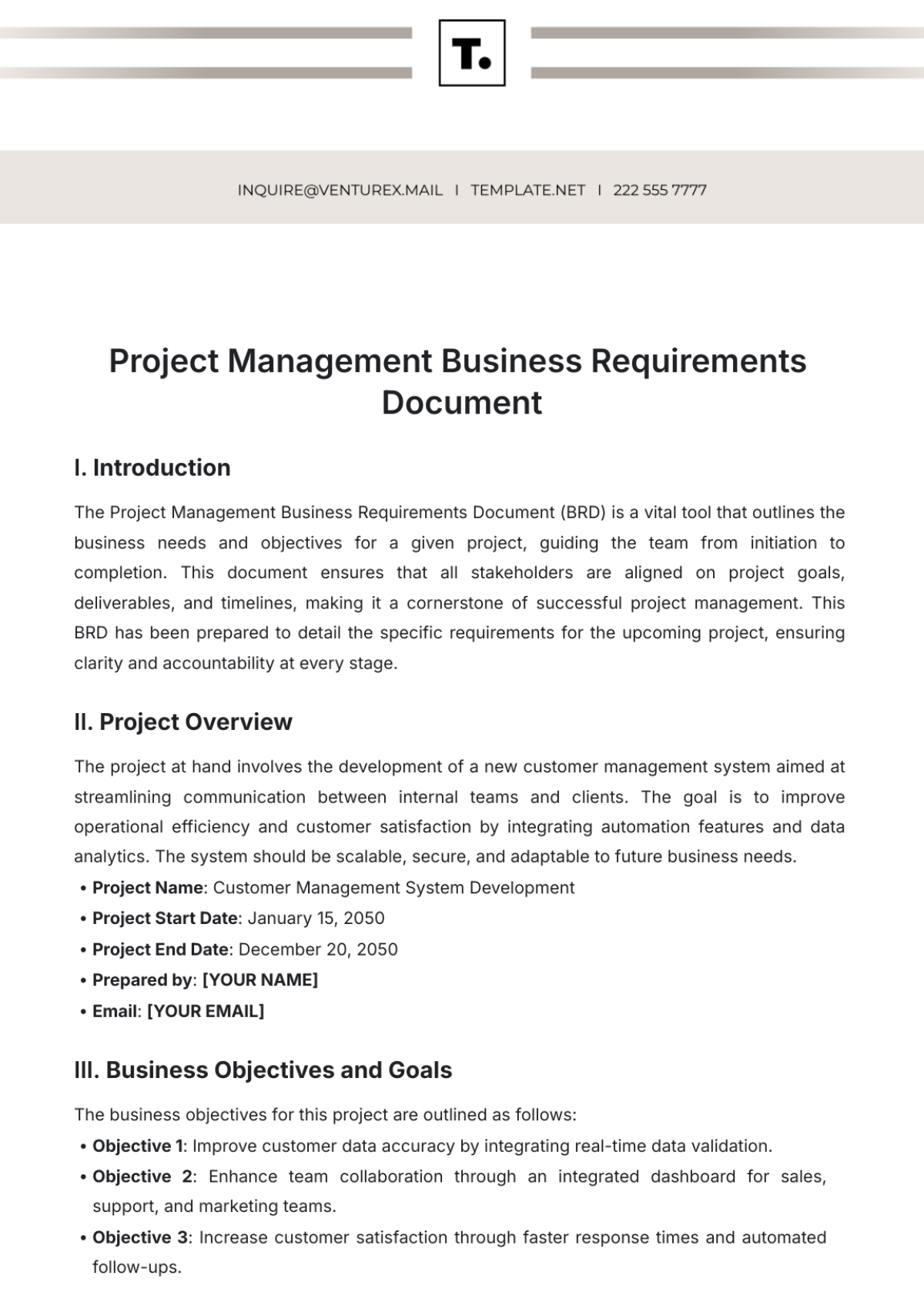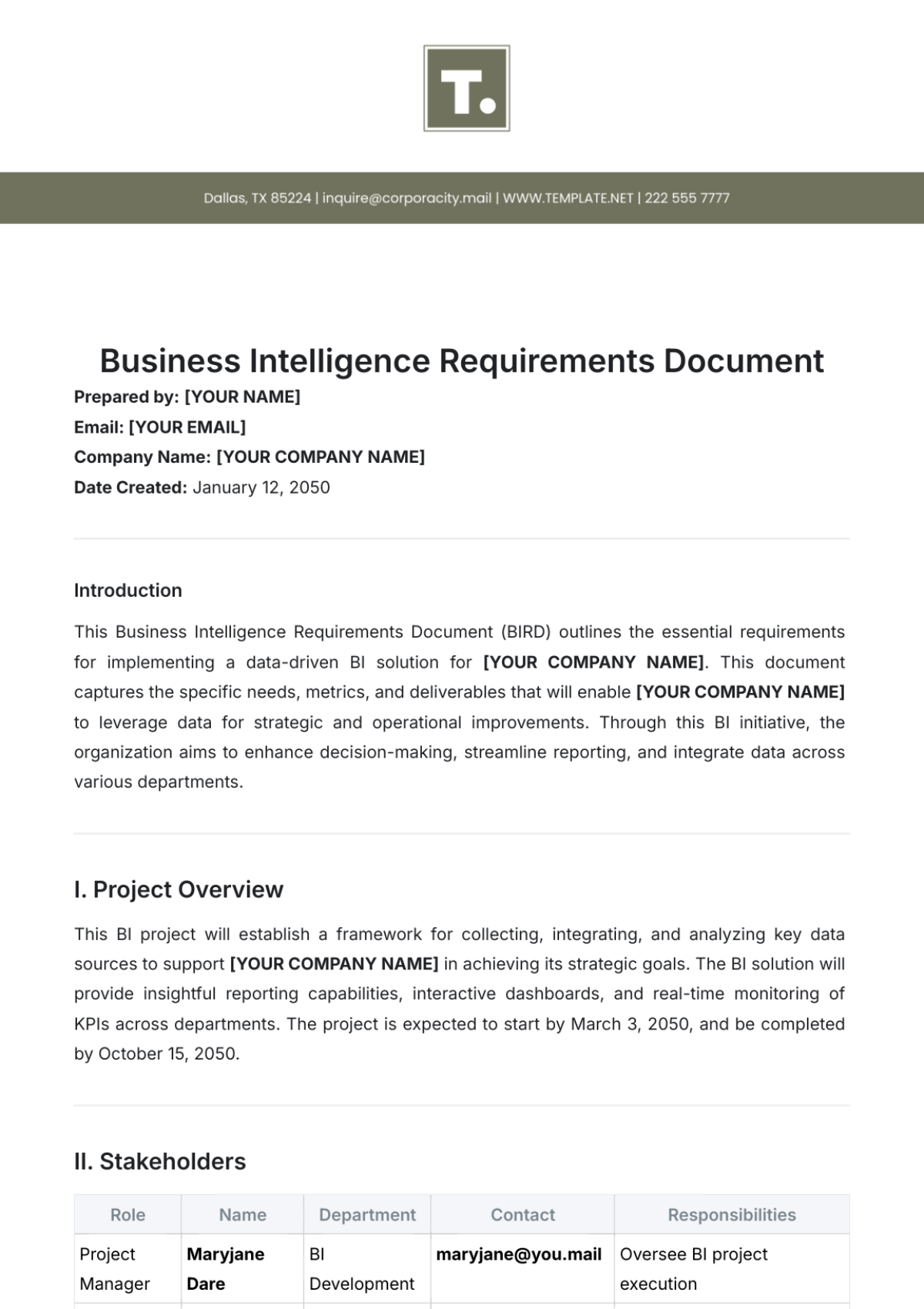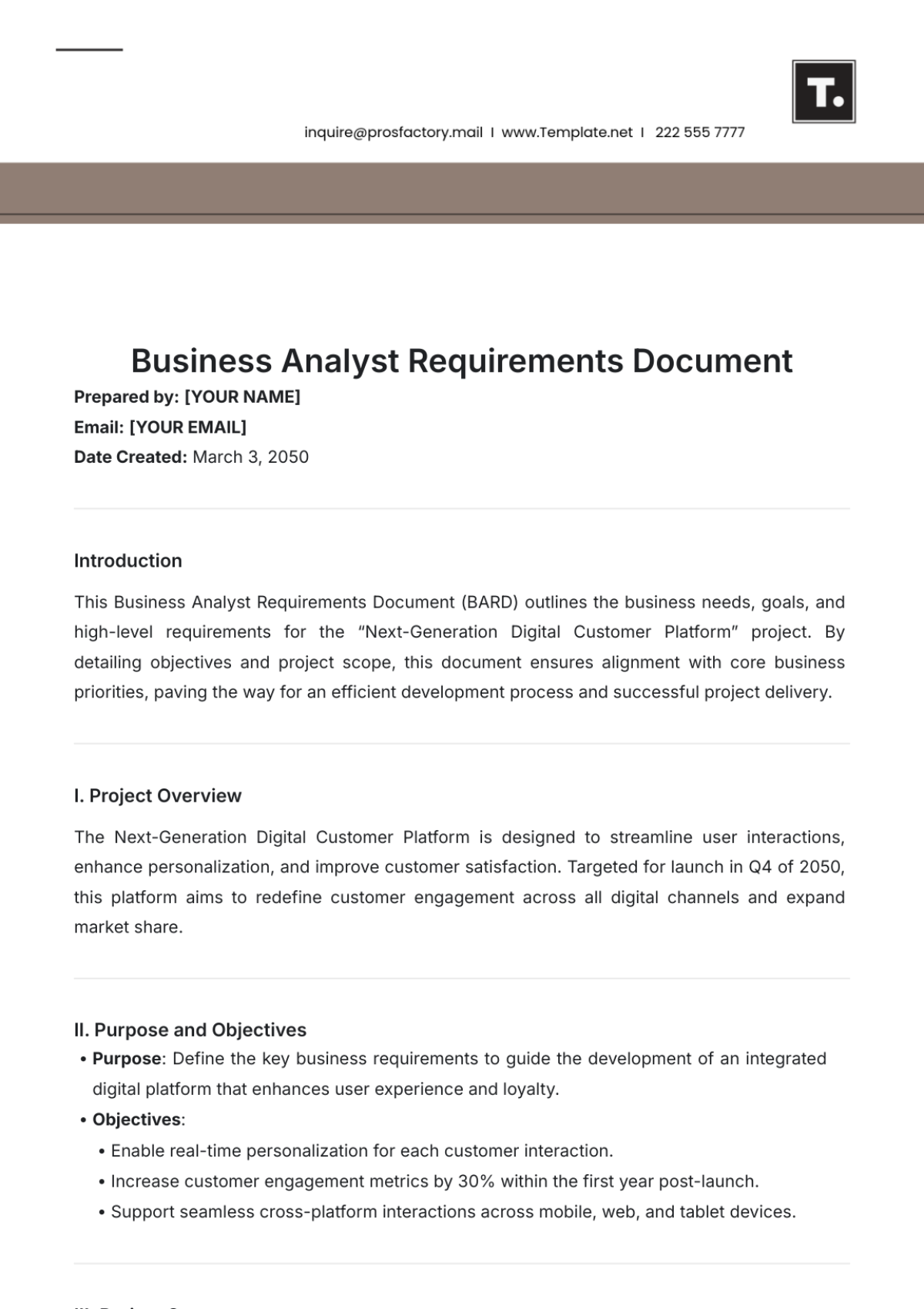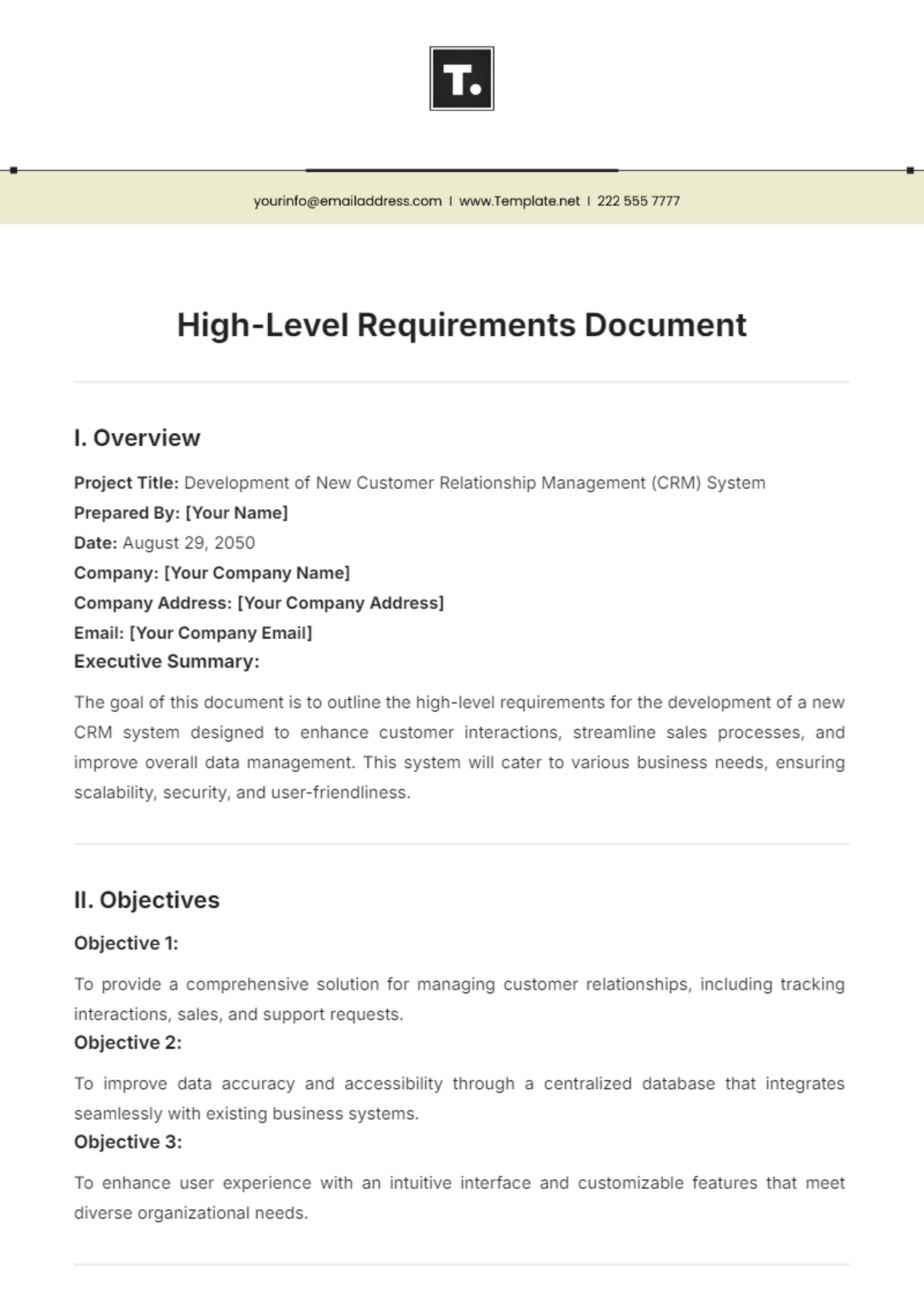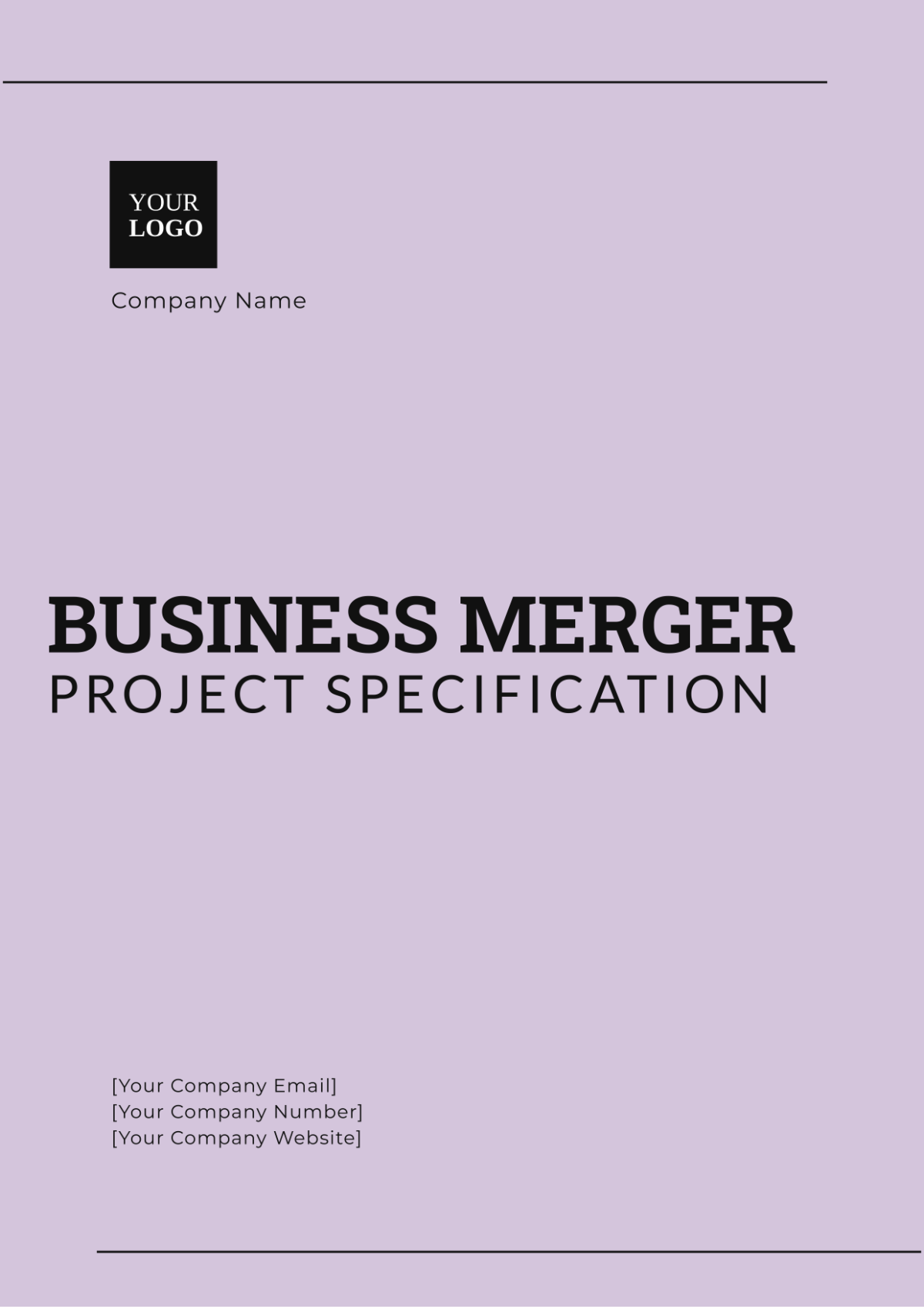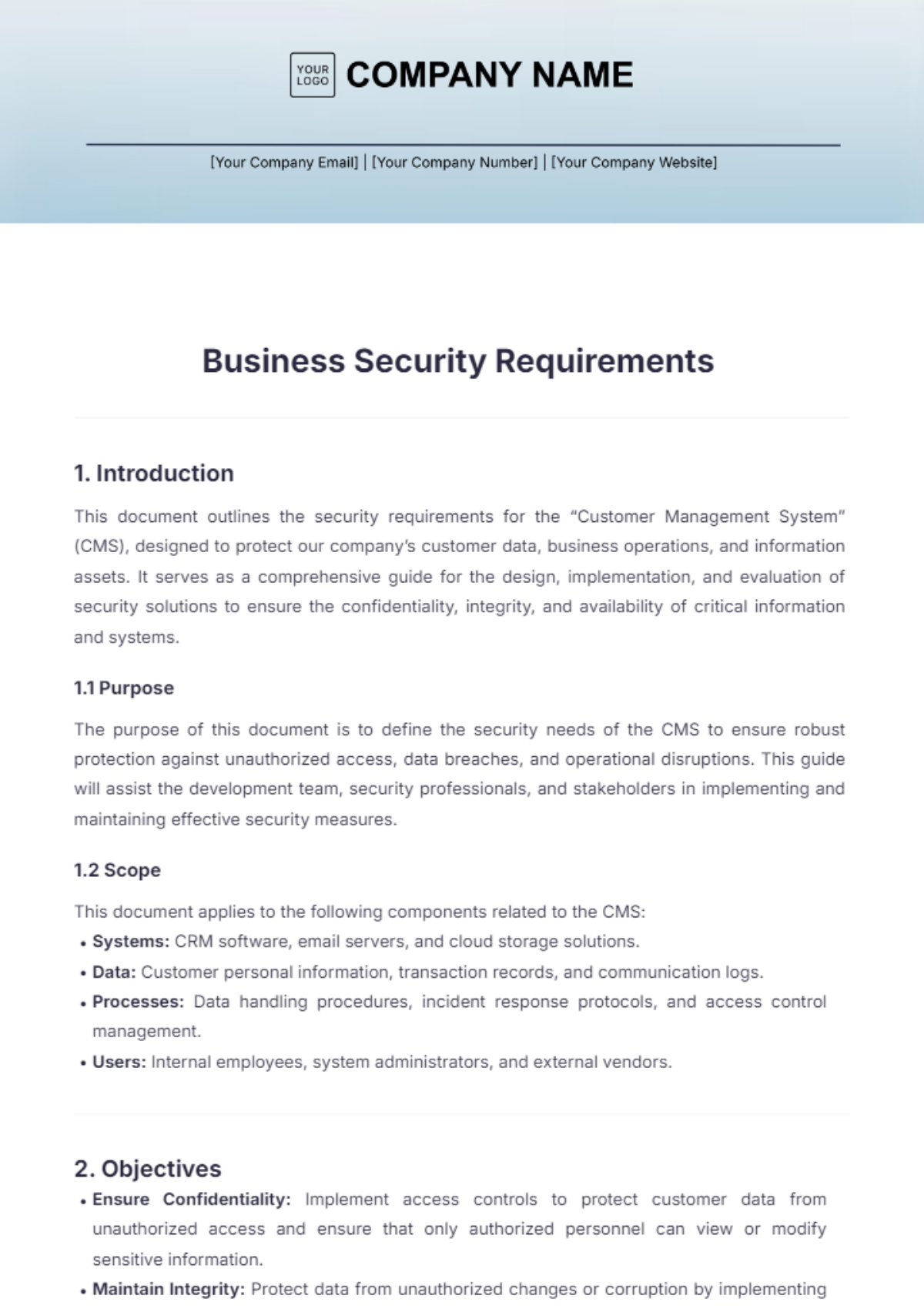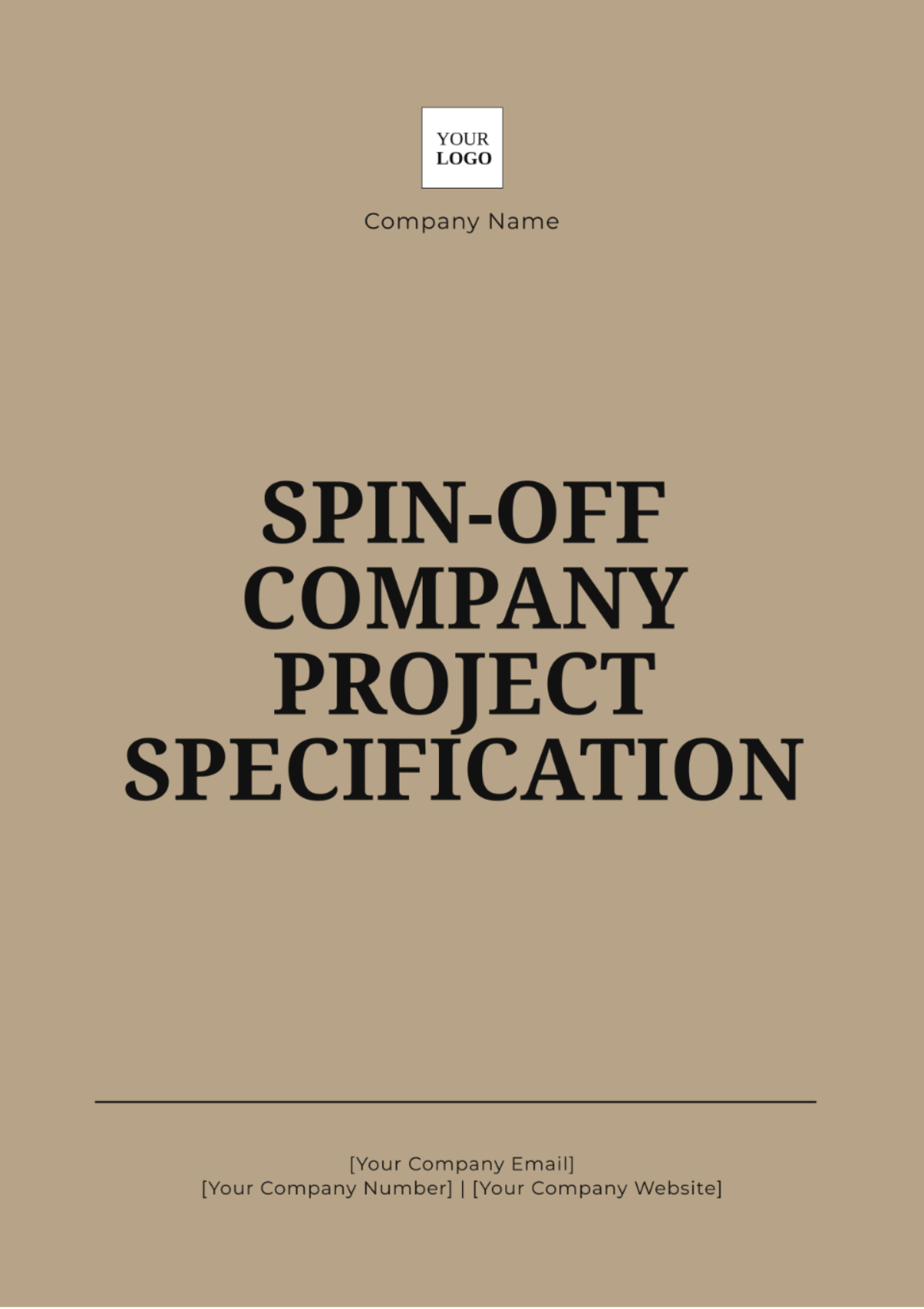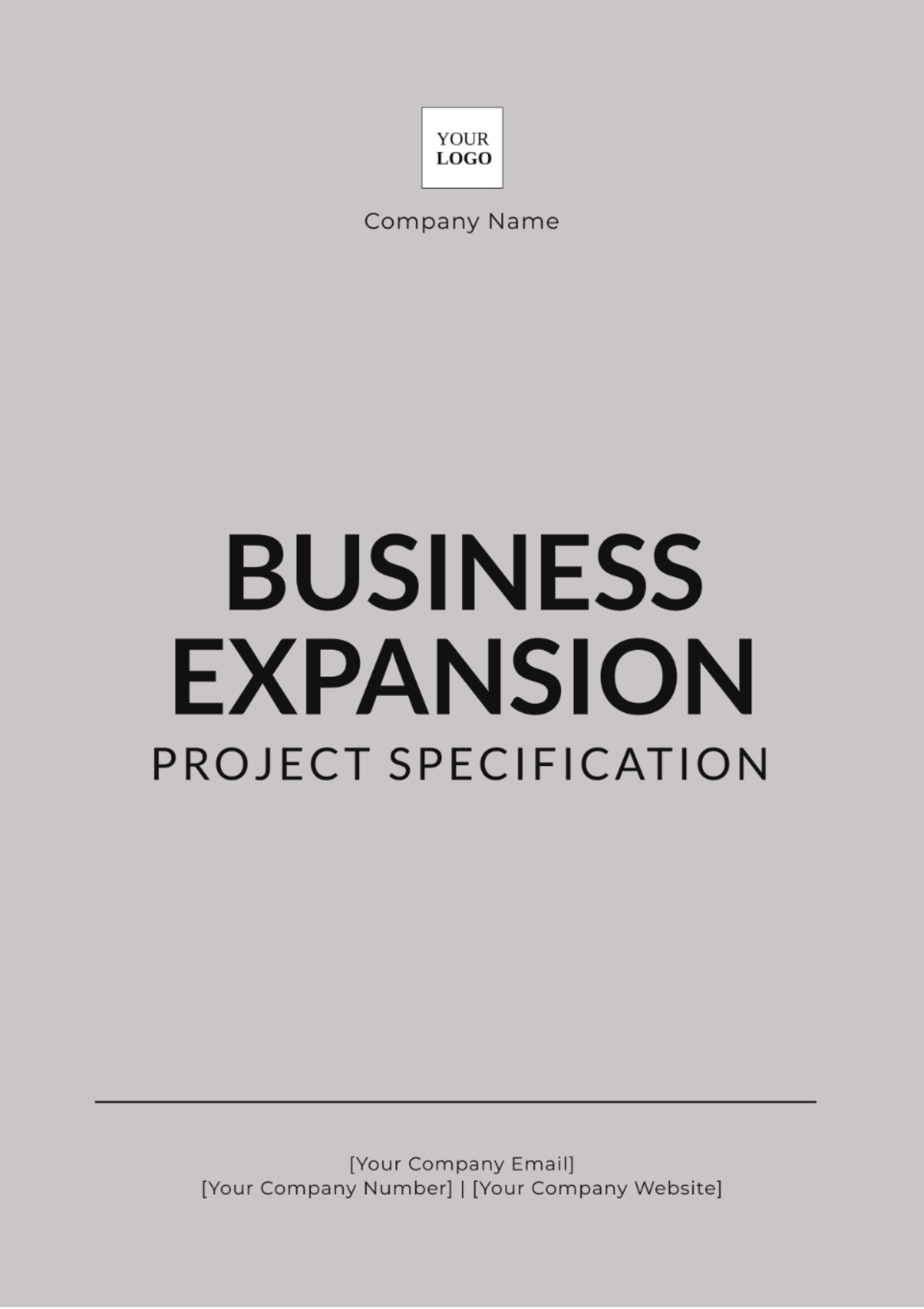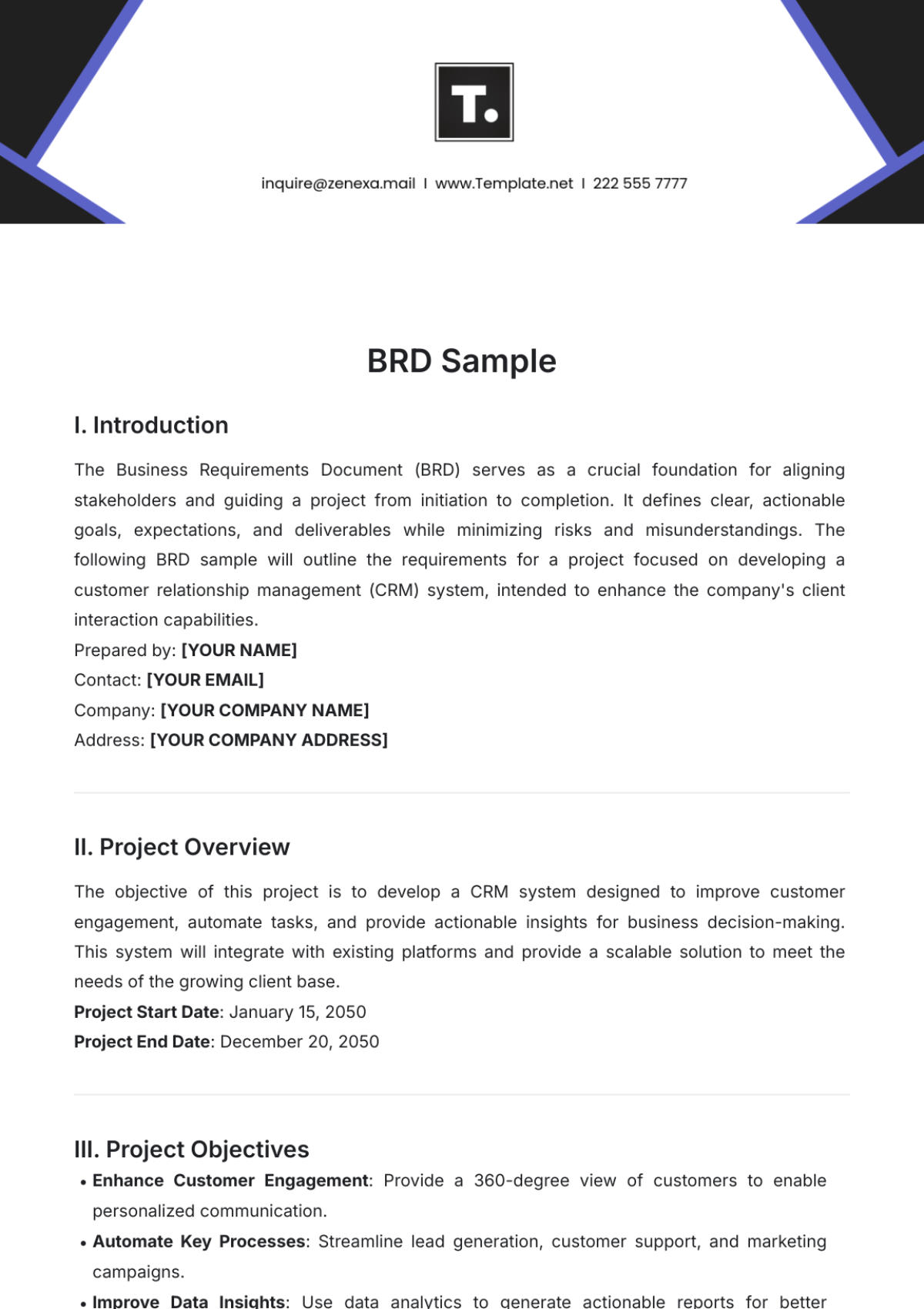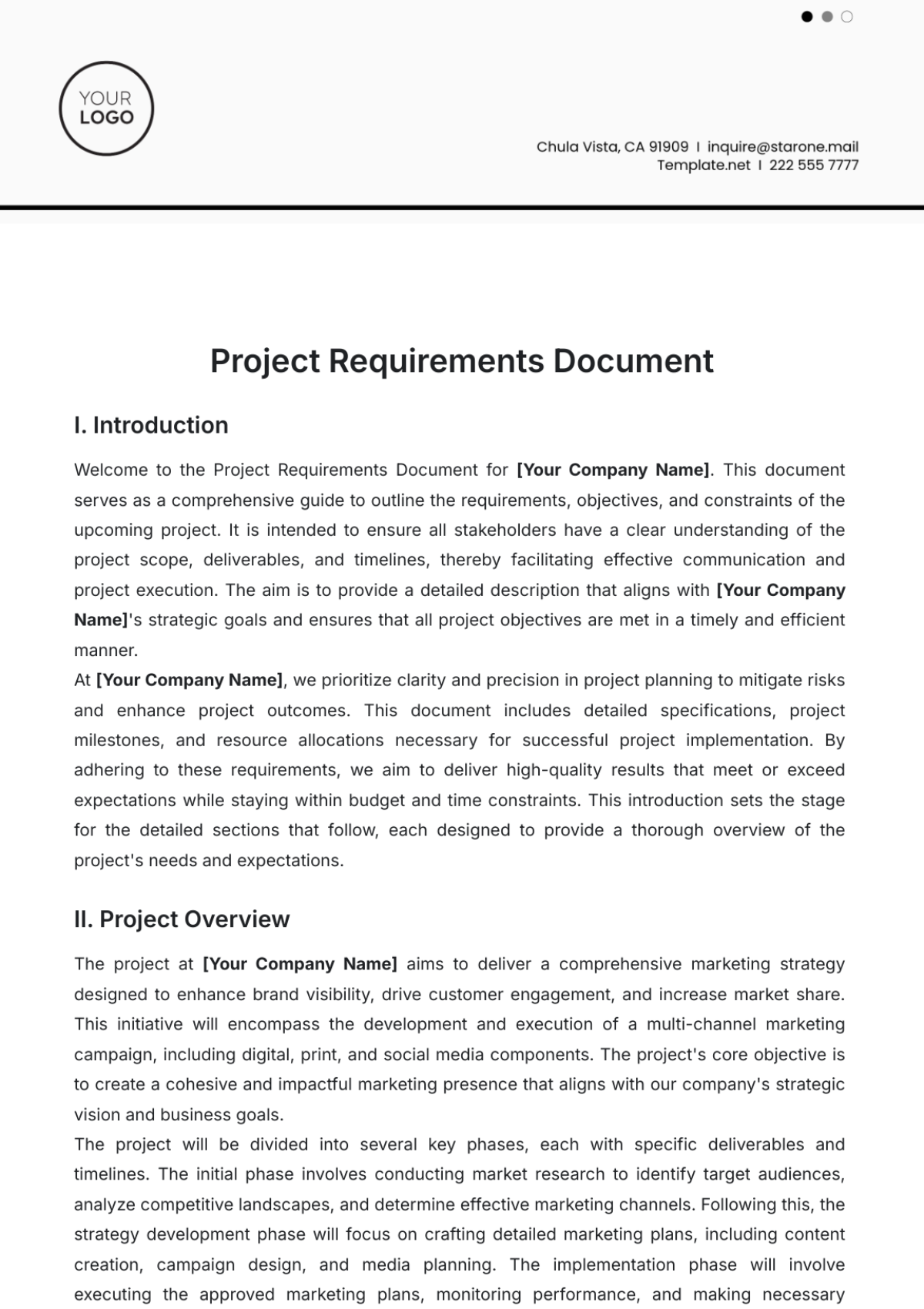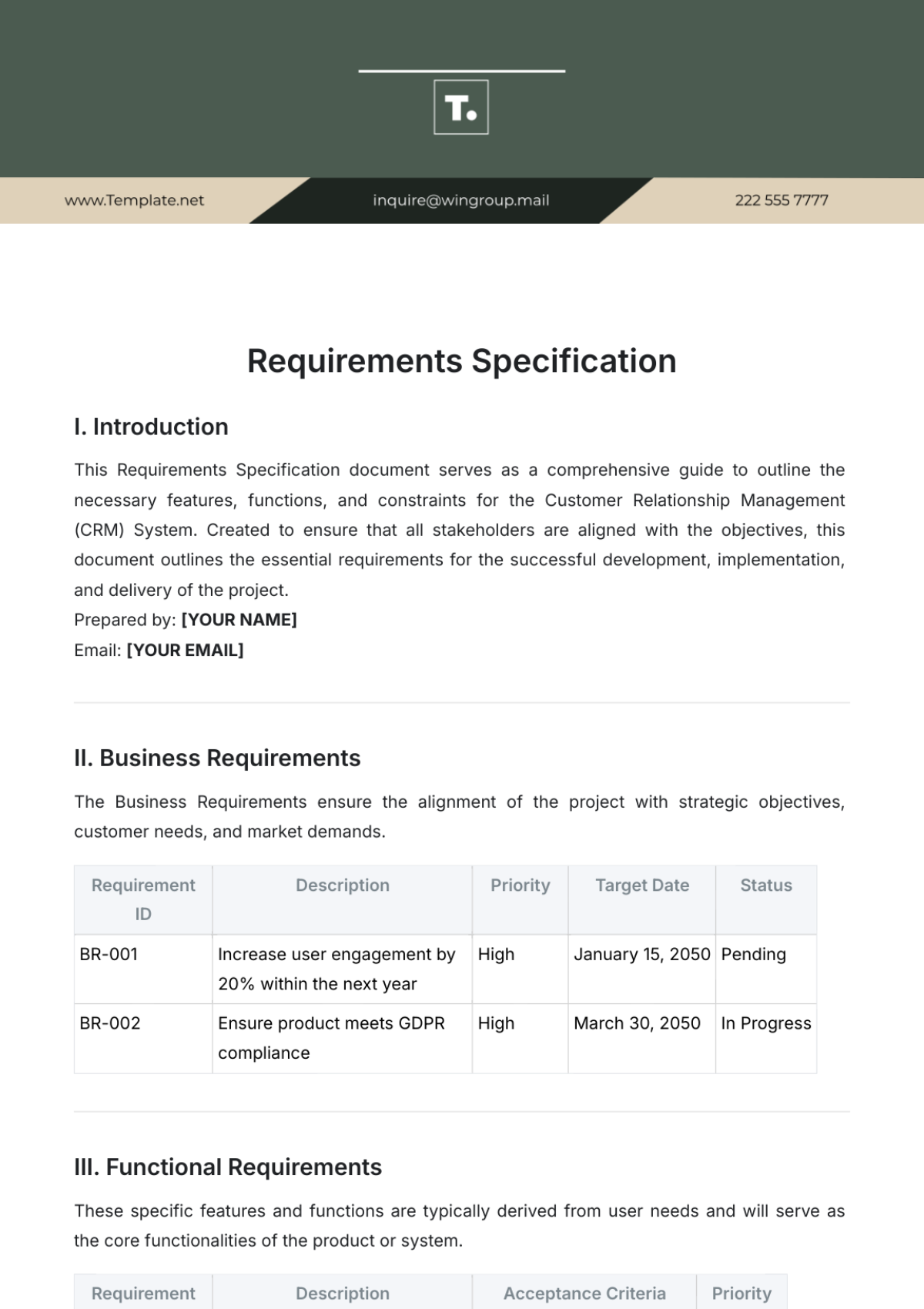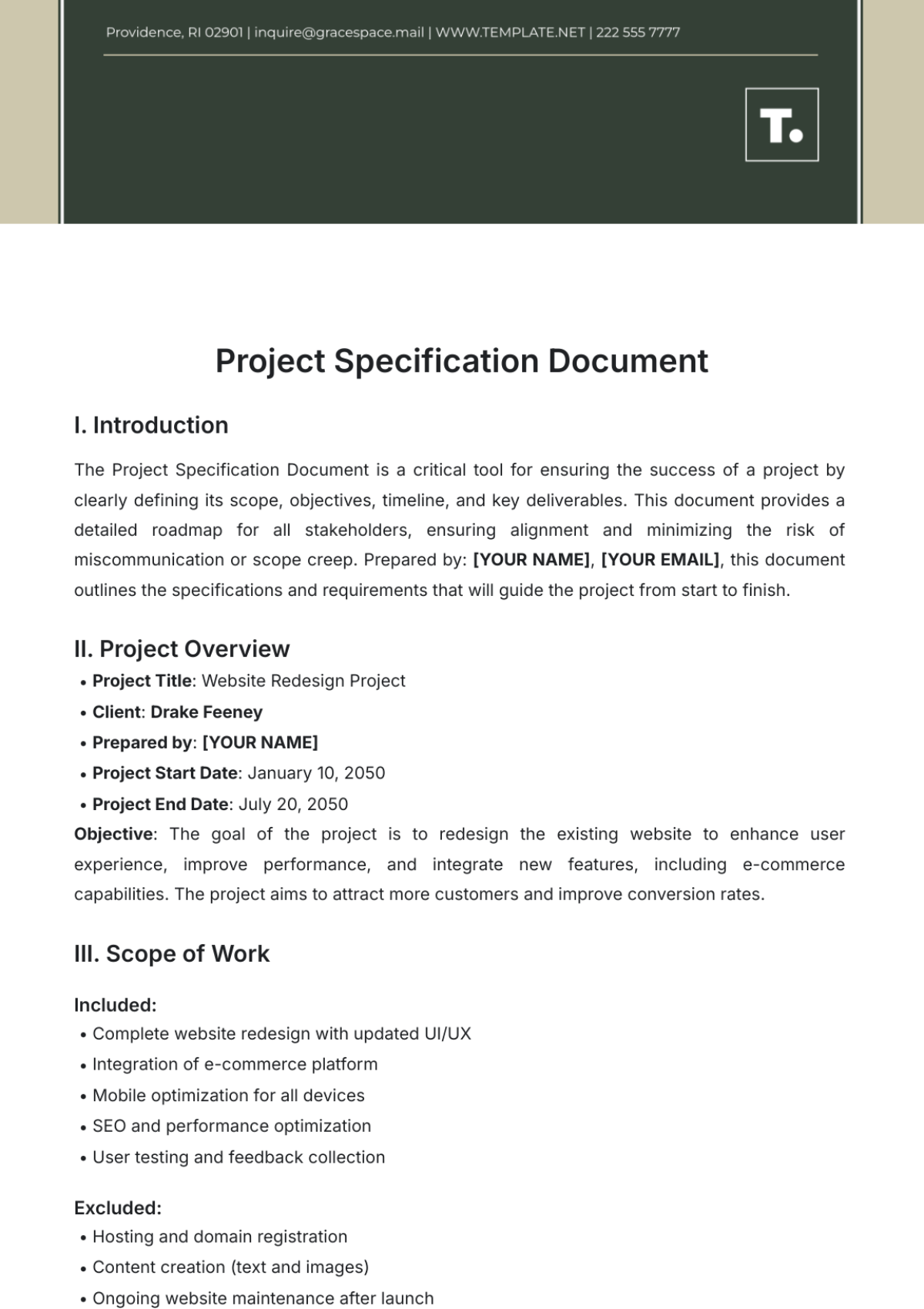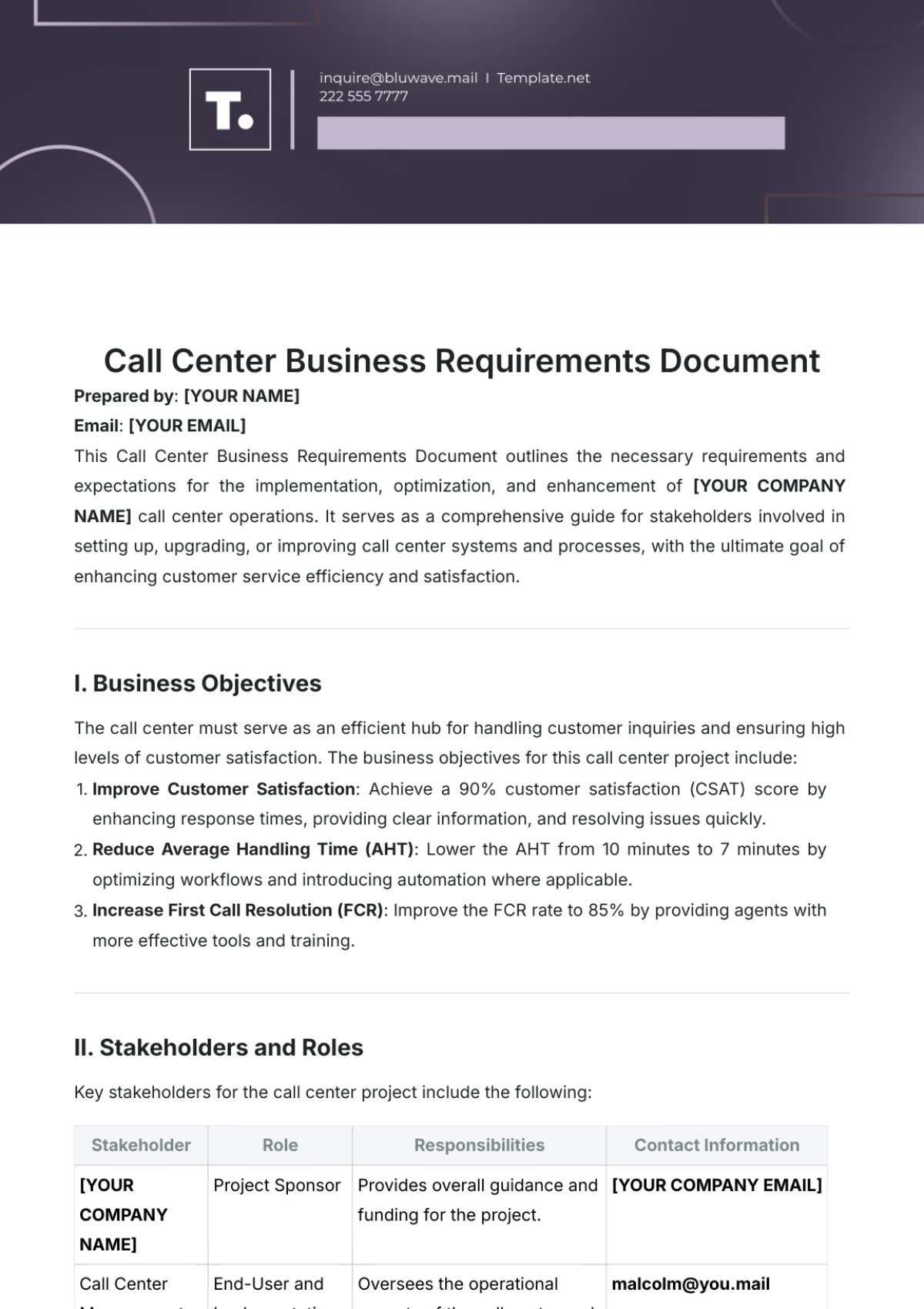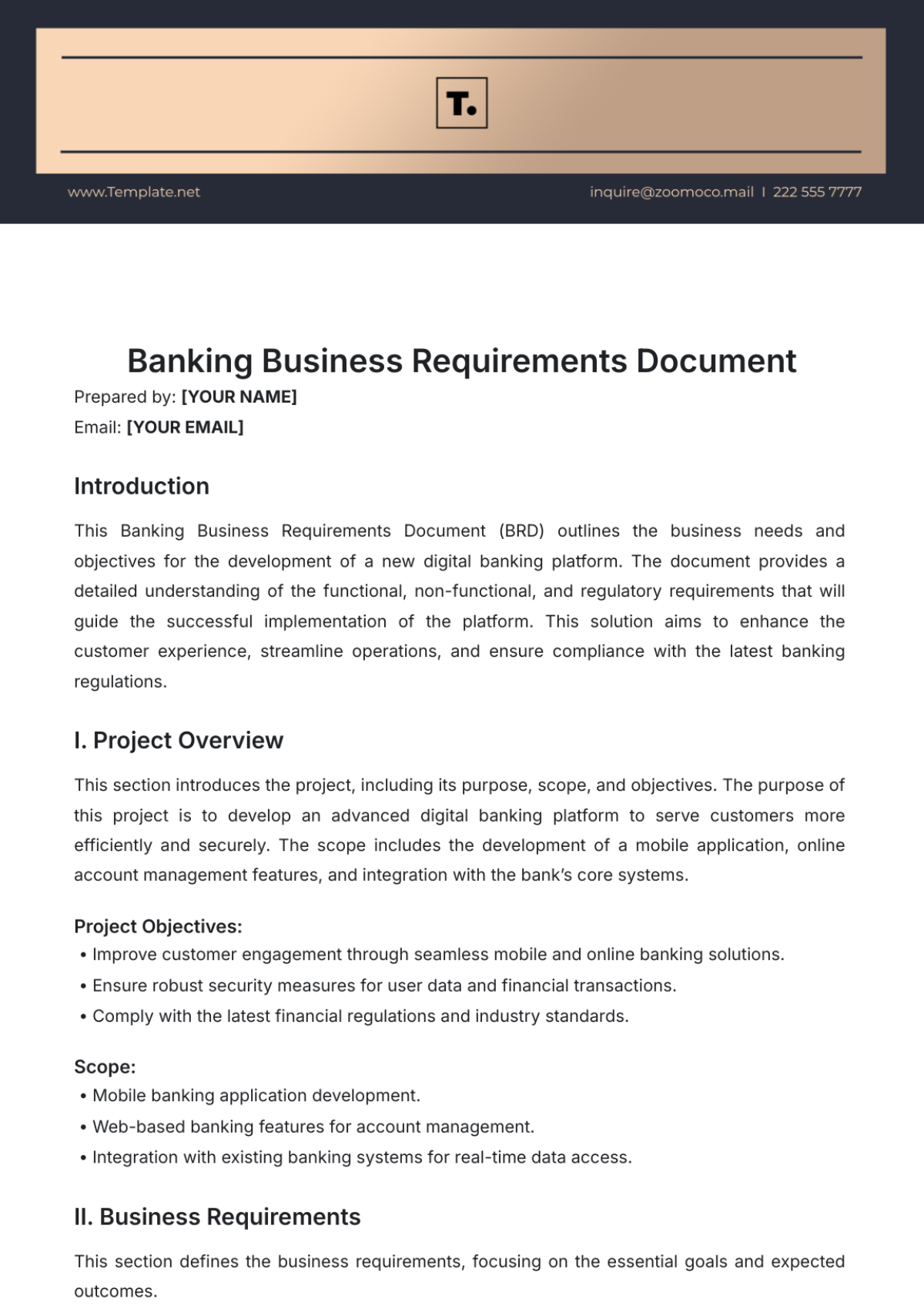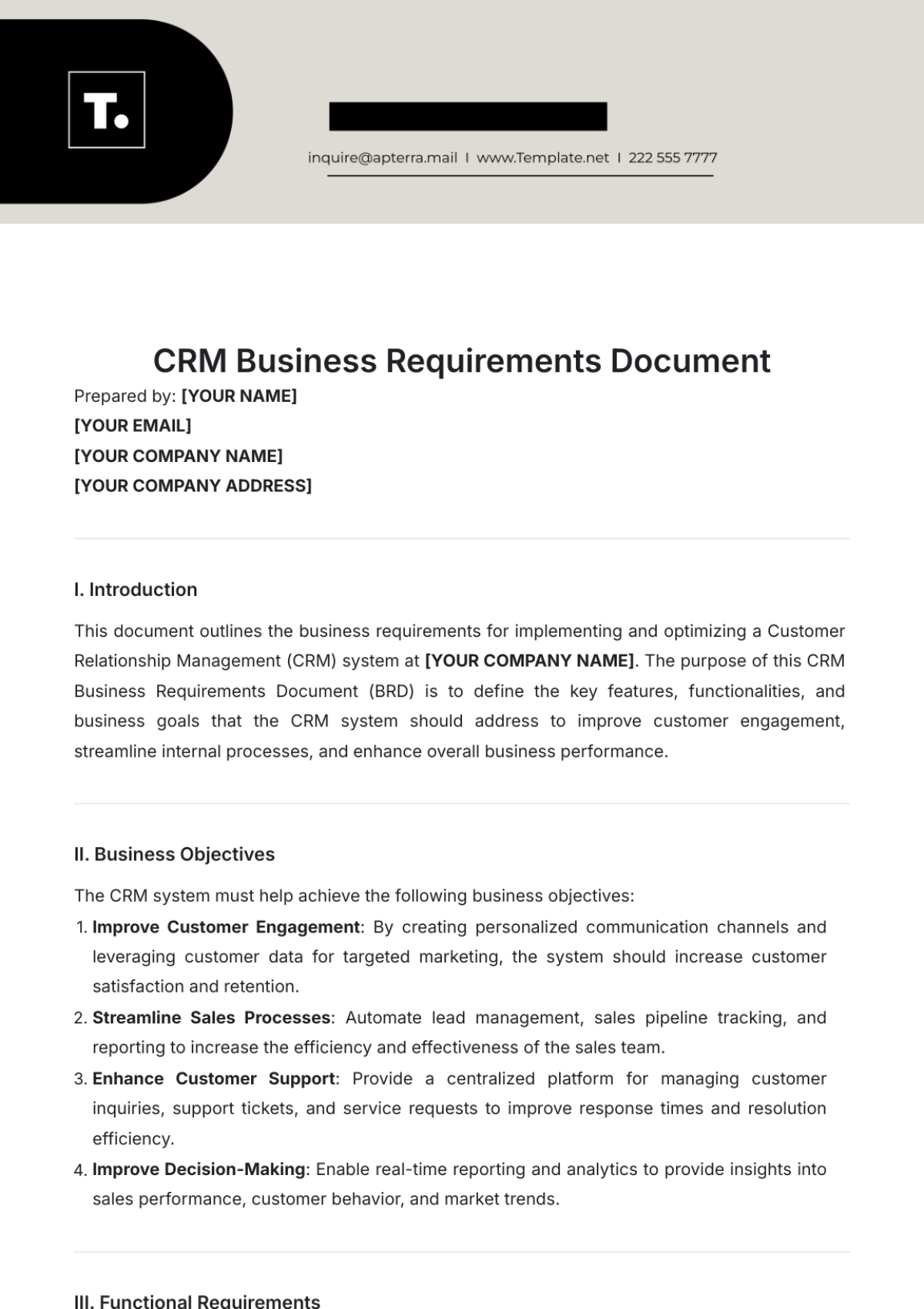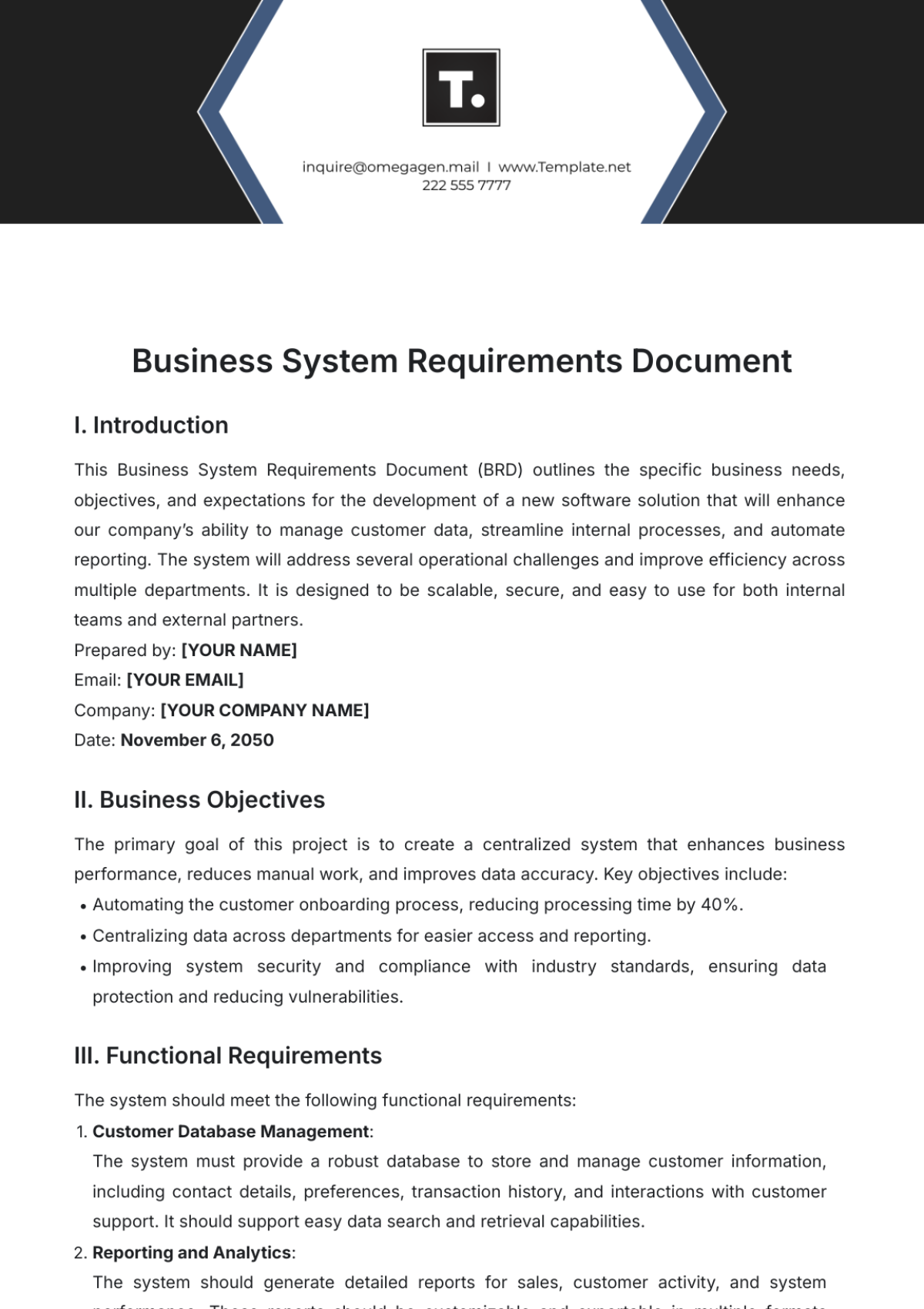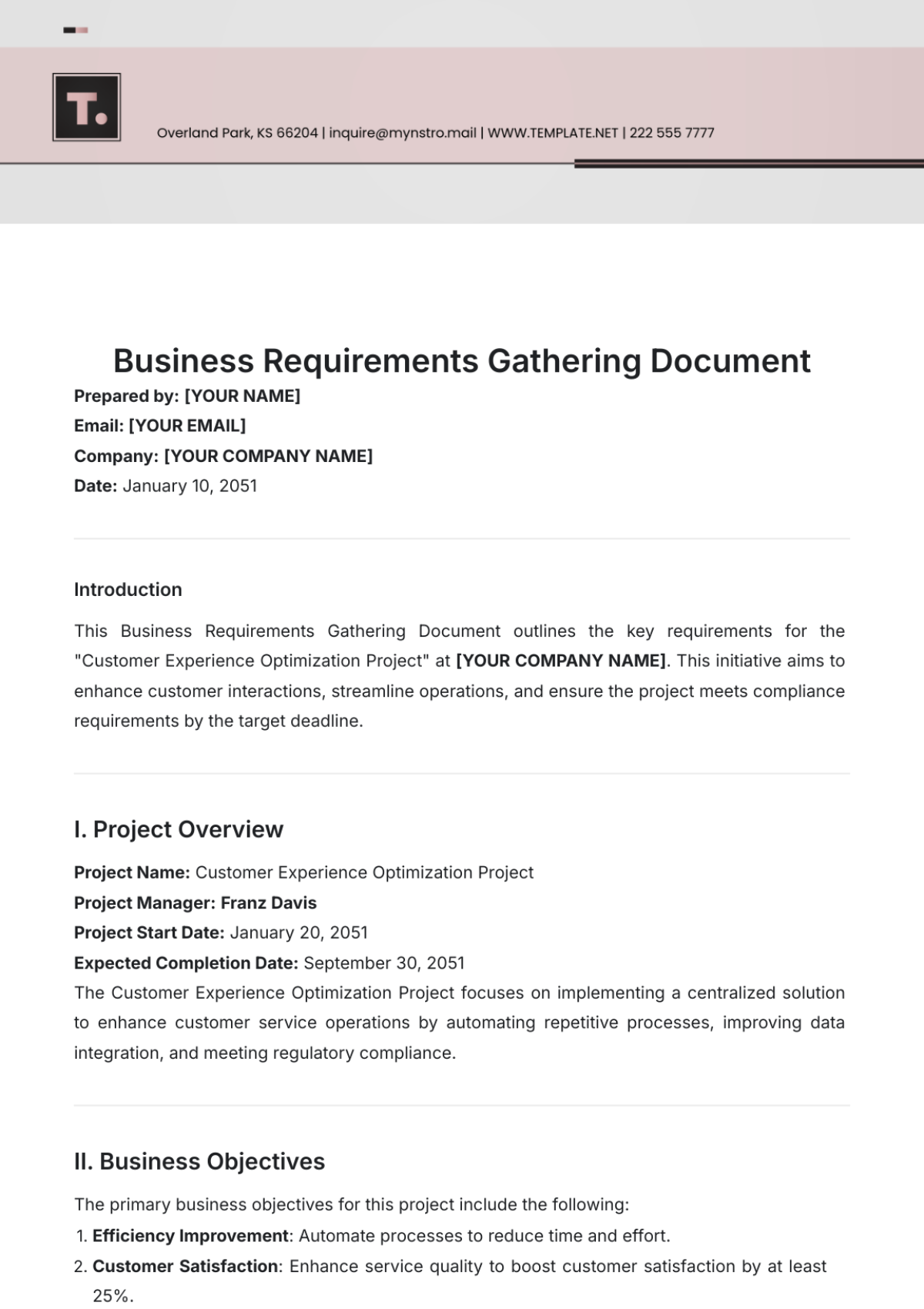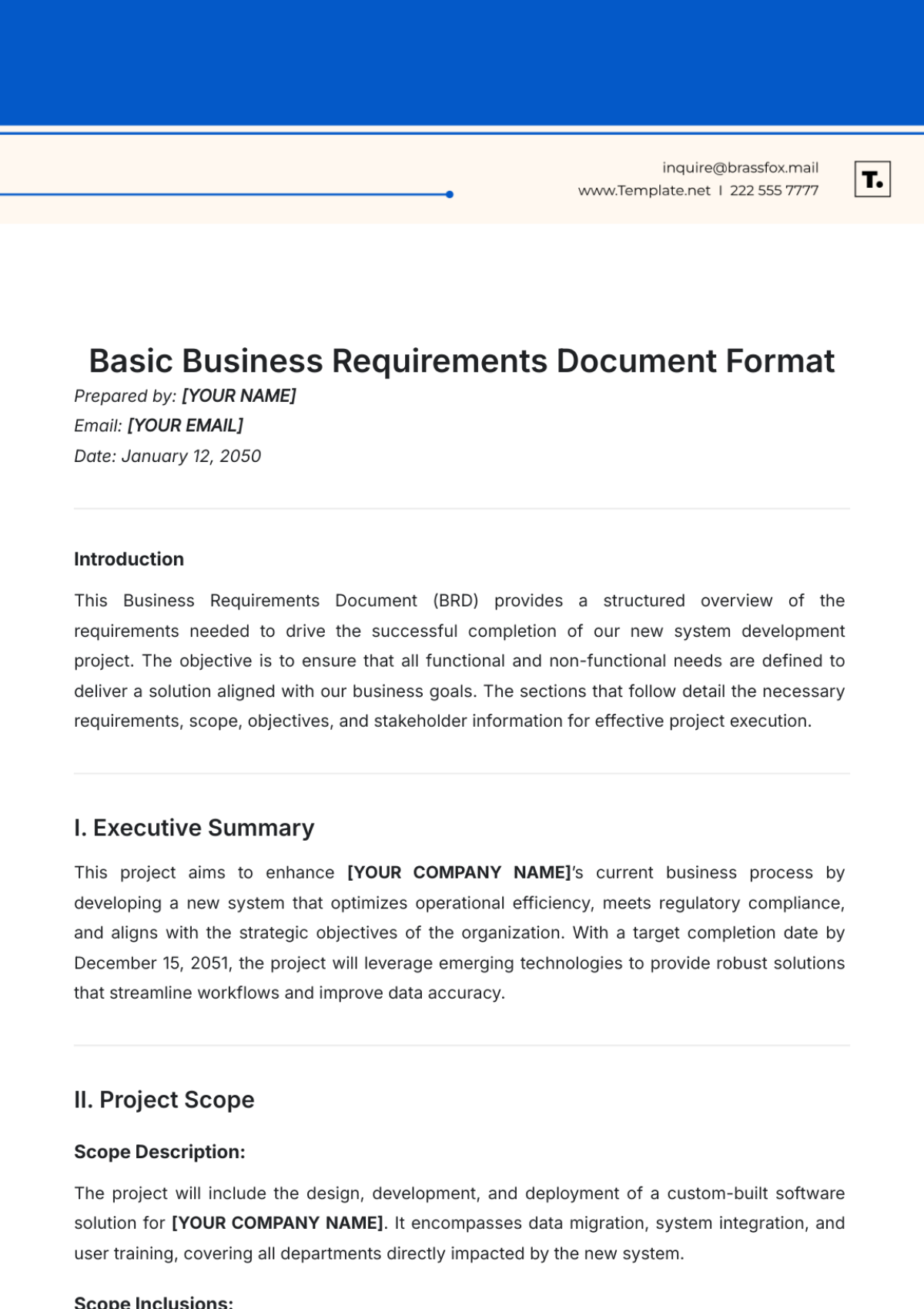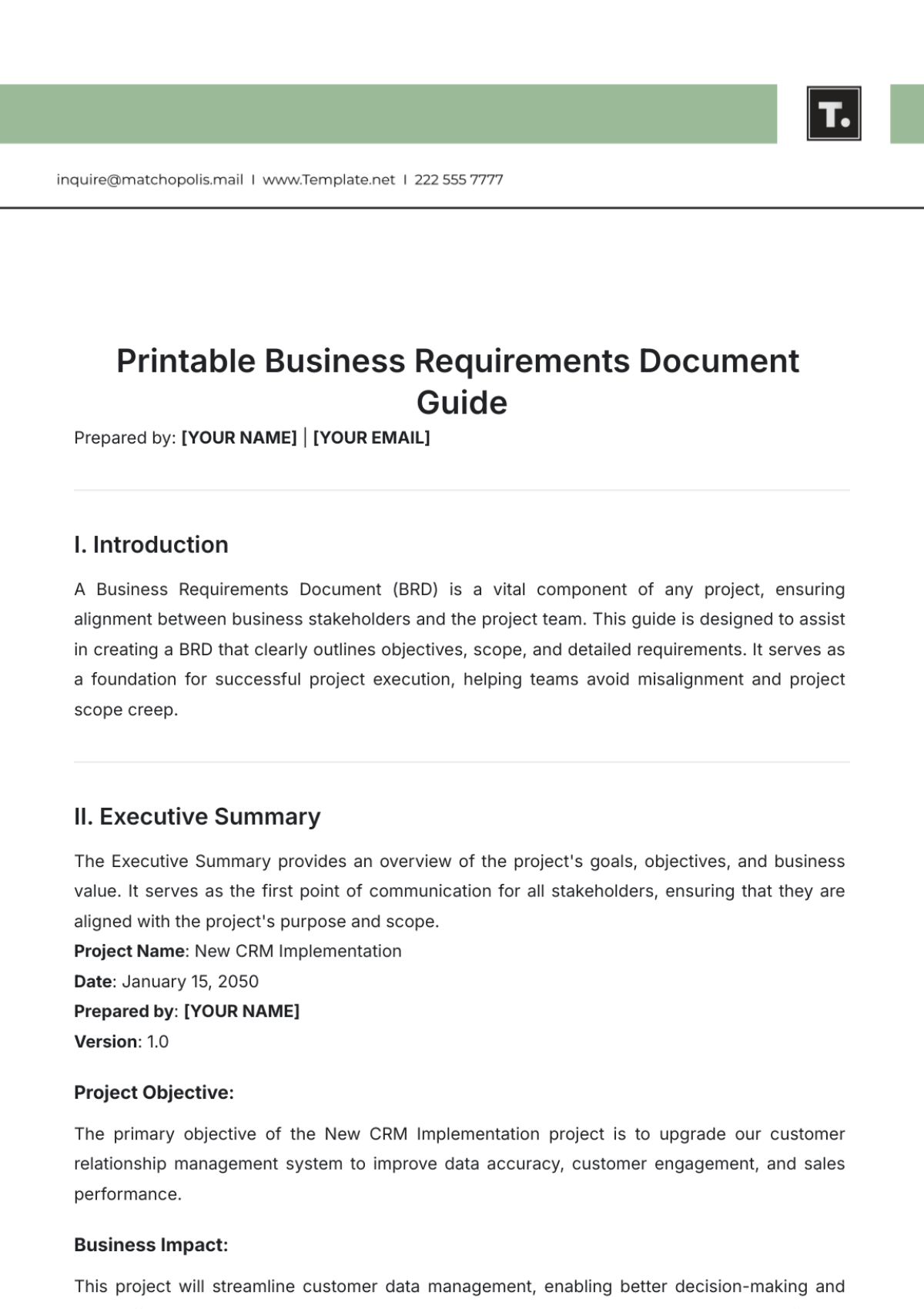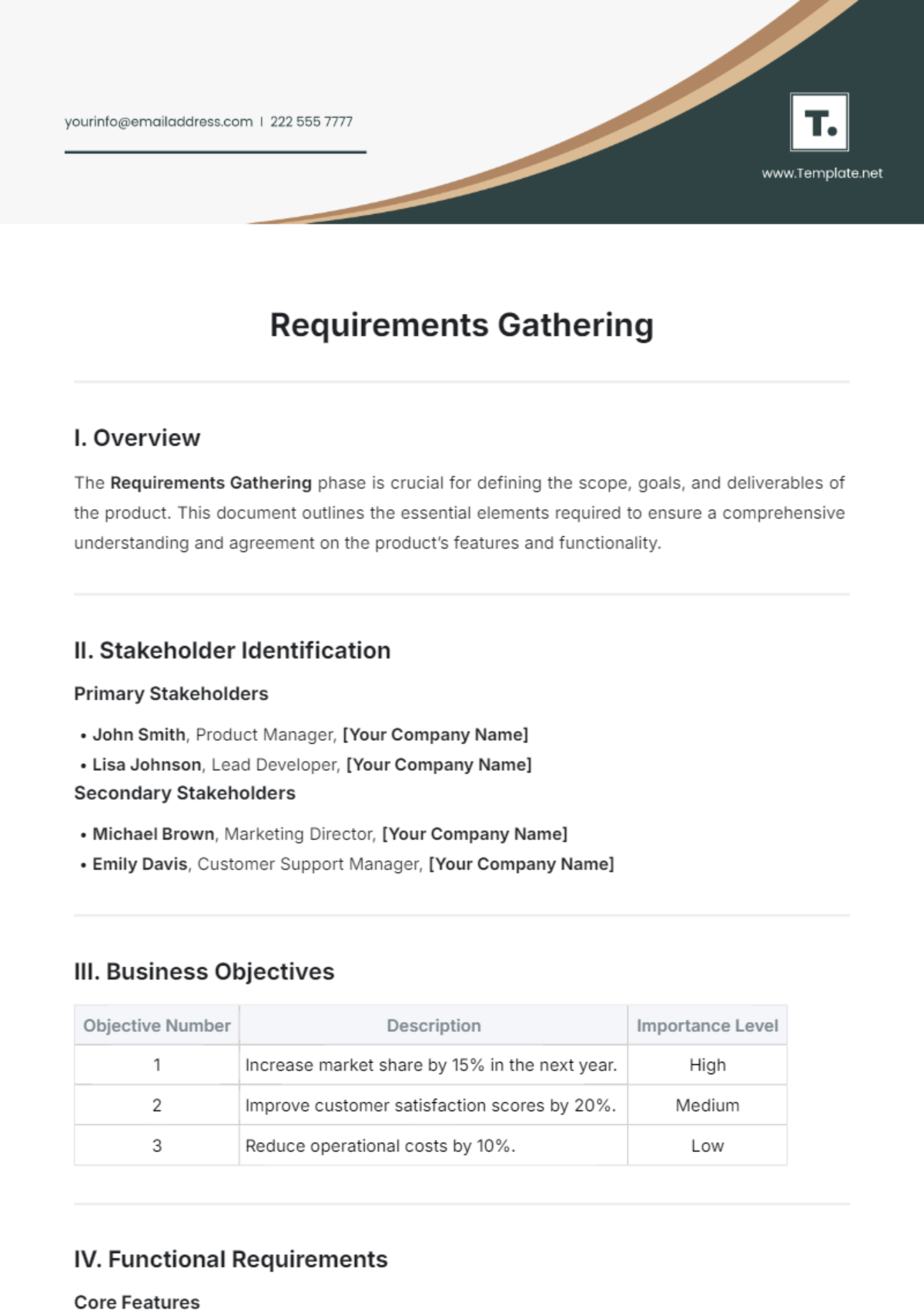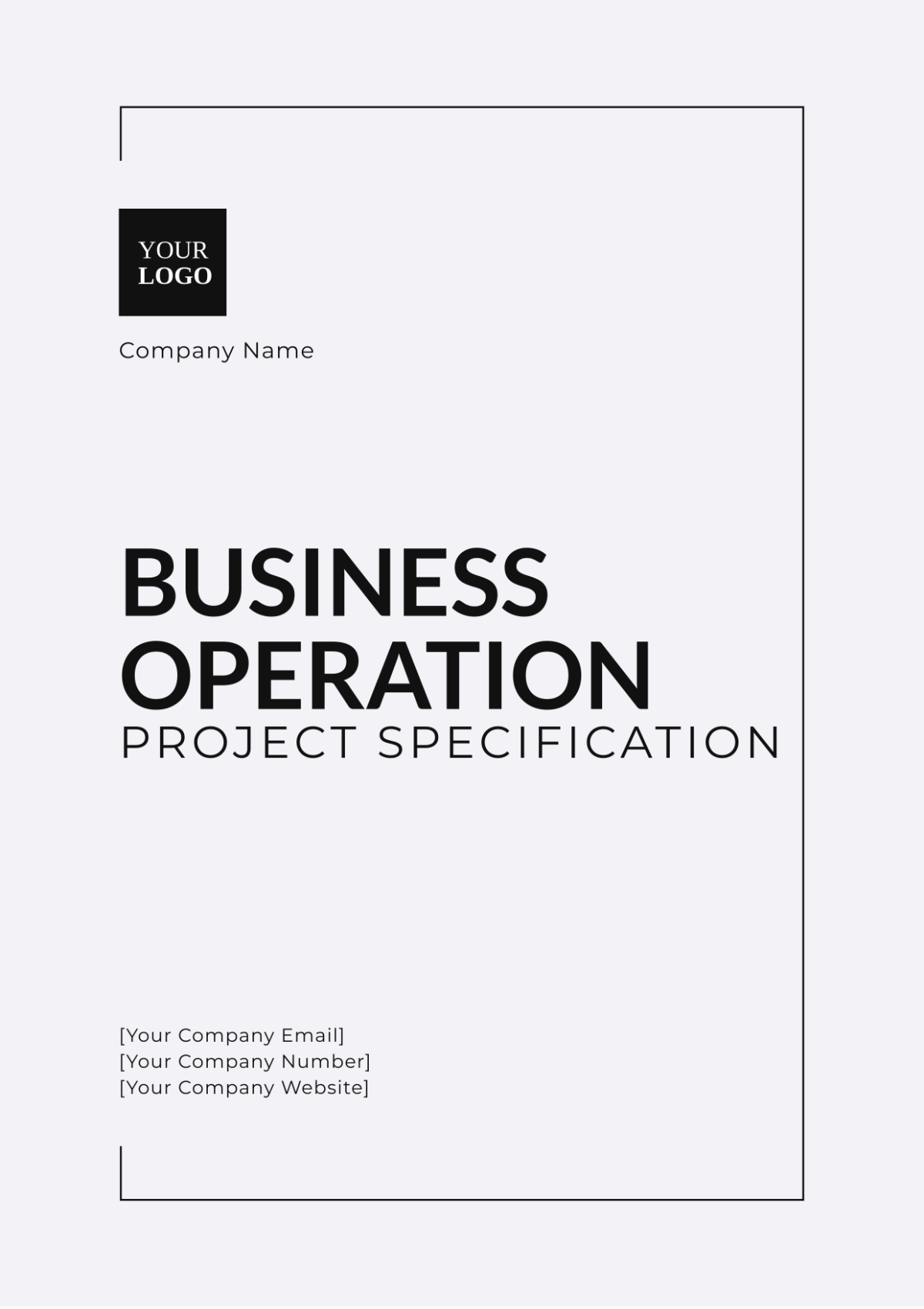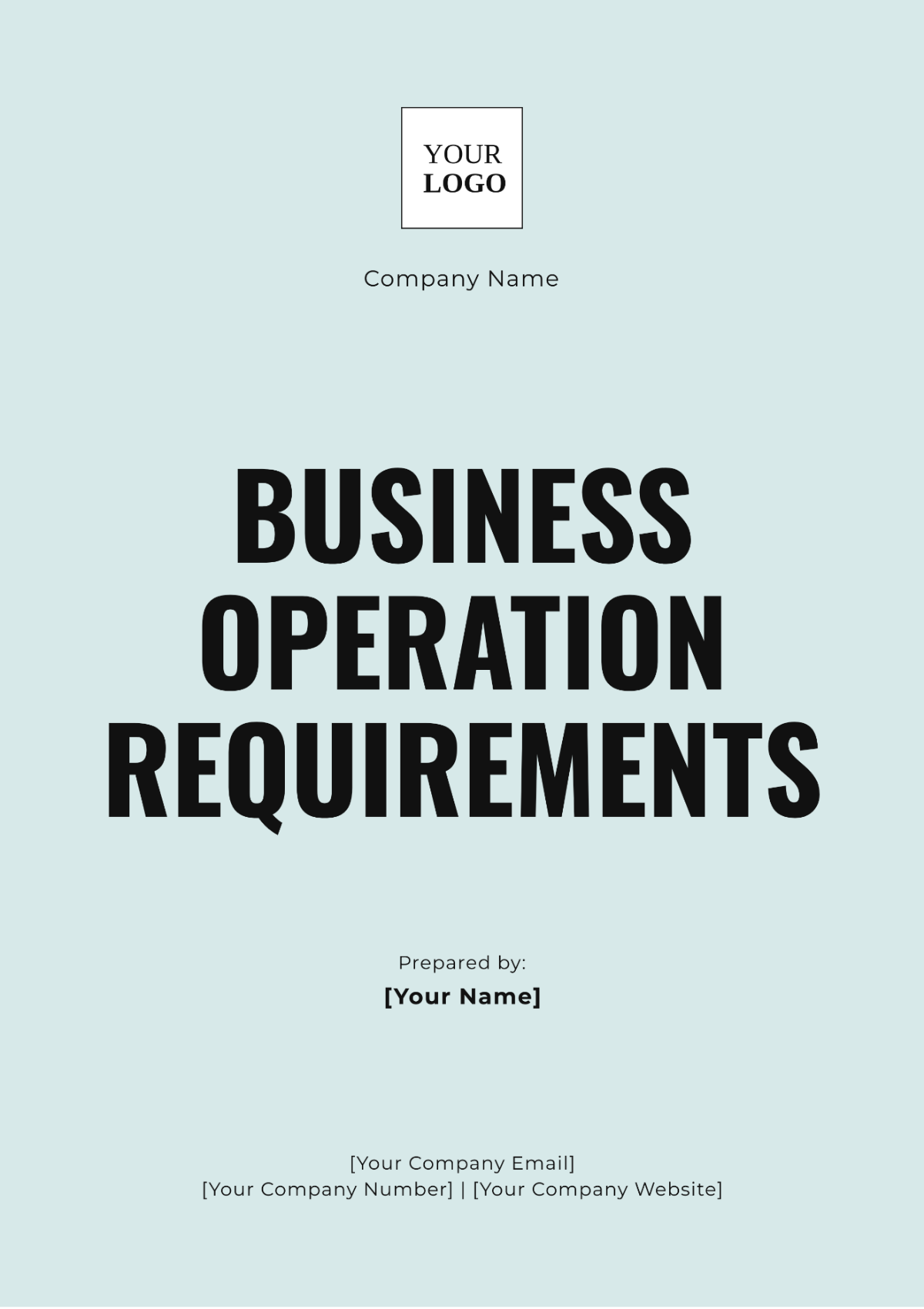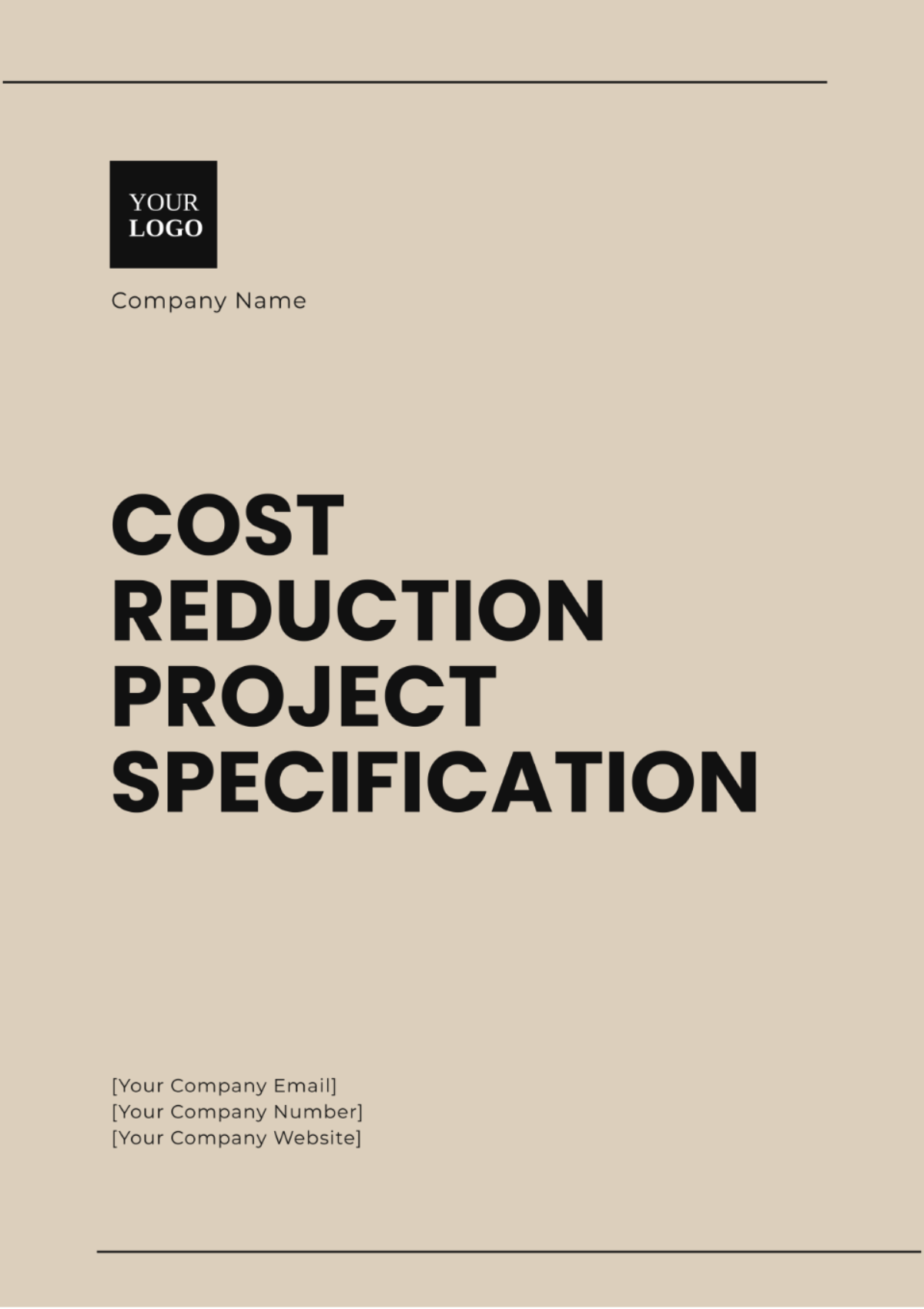Business Merger Project Specification
Prepared by: [Your Name]
Date: [Date]
I. Executive Summary
The Business Merger Project Specification outlines the comprehensive plan for the merger between two companies. This document serves as a strategic guide, detailing the requirements, objectives, and scope of the merger. It covers critical aspects including legal, financial, operational, and strategic considerations, ensuring a smooth and successful integration. The merger aims to create a powerful, synergistic entity that leverages the strengths of both organizations, enhancing market competitiveness and fostering long-term growth. This project specification provides a framework for aligning the operations and cultures of both companies, maximizing shareholder value, and positioning the combined entity for sustained success in a competitive market.
II. Objectives and Goals
The merger seeks to achieve several key objectives and goals, including:
Enhancing Market Share and Competitive Positioning:
The combined entity will benefit from an expanded customer base and increased market penetration, leading to a stronger competitive position in the industry.Achieving Cost Efficiencies and Economies of Scale:
The merger aims to reduce operational costs through streamlined processes and shared resources, allowing for economies of scale that improve overall efficiency and profitability.Combining Resources and Expertise to Drive Innovation and Growth:
By pooling together the resources, talents, and expertise of both companies, the merger will foster innovation, accelerate product development, and enable the launch of new offerings.Improving Financial Performance and Shareholder Value:
The merger is expected to enhance financial performance through increased revenue, cost savings, and improved profitability, ultimately driving higher returns for shareholders.Streamlining Operations and Optimizing Resource Allocation:
The integration process will focus on aligning operations, eliminating redundancies, and optimizing resource allocation to support the long-term strategic goals of the combined entity.
III. Scope of the Merger
The scope of the merger encompasses the following key areas:
A. Entities Involved
Company 1
Company 2
B. Functional Areas Affected
The merger will impact several key functional areas across both organizations:
Finance:
Integration of financial systems, harmonization of accounting practices, and alignment of budgeting processes.Human Resources:
Unification of HR policies, benefits, and compensation structures, along with the integration of employee databases.Operations:
Consolidation of operational processes, optimization of supply chain management, and alignment of production facilities.IT Systems:
Integration of IT infrastructure, software applications, and cybersecurity measures to support seamless operations.Marketing and Sales:
Coordination of marketing strategies, unification of branding efforts, and alignment of sales channels and customer service protocols.
IV. Legal and Regulatory Considerations
The merger will adhere to a range of legal and regulatory requirements, including:
Anti-Trust Laws:
Conduct thorough assessments to ensure the merger does not result in monopolistic practices or reduce market competition. Engage with regulatory authorities to address any antitrust concerns.Due Diligence:
Comprehensive due diligence will be conducted to verify the financial, legal, and operational status of both companies. This includes reviewing liabilities, assets, contracts, and compliance records.Contractual Obligations:
Review and potentially renegotiate existing contracts and obligations that may be affected by the merger. This includes agreements with suppliers, customers, and partners.Regulatory Approvals:
Obtain necessary approvals from relevant regulatory bodies, such as the Federal Trade Commission (FTC) and the Securities and Exchange Commission (SEC), to ensure compliance with applicable laws and regulations.
V. Financial Analysis
A detailed financial analysis will be performed, covering:
Valuation:
Determine the fair market value of both companies to establish an equitable merger ratio, ensuring a balanced exchange of shares or assets.Financial Statements:
Review and analyze the most recent financial statements, including balance sheets, income statements, and cash flow statements, to assess financial health and stability.Synergies:
Identify potential cost savings and revenue enhancements resulting from the merger, such as reduced overhead costs, improved pricing power, and expanded market opportunities.Financing:
Determine the financing structure for the merger, including considerations for debt issuance, equity exchange, or other financial instruments. Develop a plan for managing the financial aspects of the integration process.
VI. Operational Plan
The operational plan outlines the strategy for integrating the two companies:
Integration Teams:
Designate integration managers and teams from both organizations to oversee the merger process. These teams will be responsible for coordinating activities, resolving issues, and ensuring a smooth transition.Timeline:
Develop a detailed timeline for all integration activities, including key milestones, deadlines, and checkpoints. The timeline will provide a clear roadmap for the implementation of the merger plan.Systems Integration:
Plan for the seamless integration of IT systems and infrastructure, including data migration, software integration, and hardware compatibility.Process Alignment:
Align operational processes and best practices across both organizations to create a cohesive and efficient workflow. This includes standardizing procedures, optimizing supply chains, and integrating production lines.
VII. Risk Assessment and Mitigation
Identify potential risks associated with the merger and develop strategies to mitigate them:
Financial Risks:
Assess and manage risks related to financial instability, market fluctuations, and potential adverse effects on stock prices or credit ratings.Operational Risks:
Address risks associated with systems integration, process alignment, and potential disruptions to business continuity.Reputational Risks:
Develop a communication strategy to manage potential risks to the brand and reputation of both companies. This includes proactive engagement with stakeholders and transparent communication of the merger's benefits.
VIII. Stakeholder Communication Plan
A comprehensive communication plan will be developed to ensure all stakeholders are informed and engaged throughout the merger process:
Internal Communication:
Regular updates will be provided to employees through town hall meetings, newsletters, and intranet portals. This ensures that staff are informed, reassured, and aligned with the merger's objectives.External Communication:
Engage with customers, suppliers, shareholders, and the media through targeted communication strategies. This includes press releases, investor presentations, and direct outreach to key stakeholders.
IX. Resource Allocation
Allocate resources effectively to support the merger process:
Human Resources:
Identify and deploy key personnel for the integration team, including leaders from both companies and subject matter experts.Financial Resources:
Allocate a dedicated budget for merger-related expenses, including legal fees, consulting services, and integration costs.Technology Resources:
Ensure the necessary technology infrastructure, including hardware, software, and network capabilities, is in place to support the integration process.
X. Appendices
The appendices section will include additional documentation and detailed plans that support the merger process, such as:
Due diligence reports
Valuation assessments
Regulatory approval documents
Integration timelines and plans
Legal agreements and contracts
These documents provide supplementary information and serve as reference materials for the project team and stakeholders.

